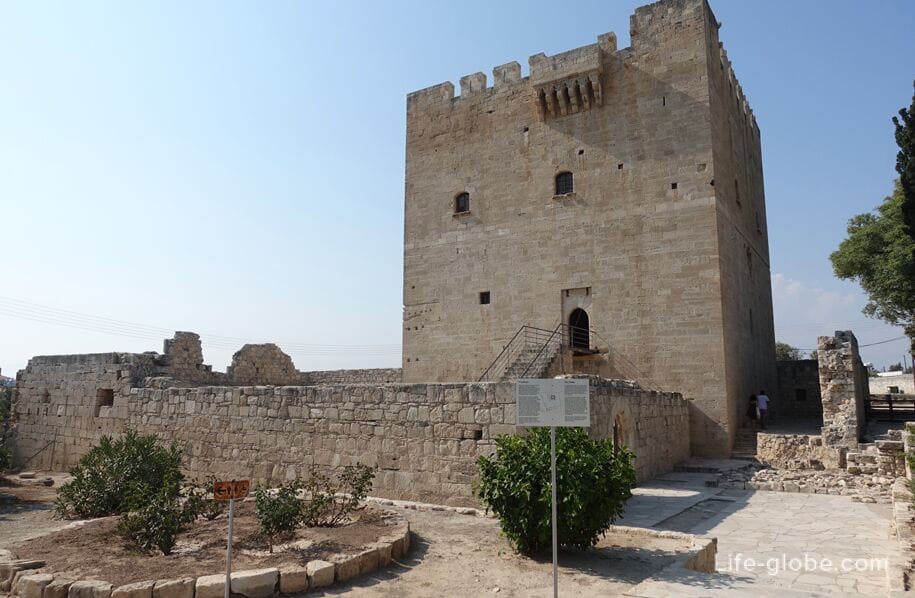
Curio (Kourion, the Greek name Κούριον, Latin Curium) - ancient city, situated on the South West coast of Cyprus along the Bay of Episkopi, in 17 kilometers from the historic center of Limassol.
Once Kourion was an important city-state, built as a Kingdom, about the 1050-750 BC and during its history belonged to the Greeks, the Romans, the Byzantines. For security purposes, Kourion is situated on the top of the cliff.
Currently, the site is a Archaeological open air Museum, located within the British overseas territory of Akrotiri and operated by the Cyprus Department of Antiquity and is part of the UNESCO world heritage site.
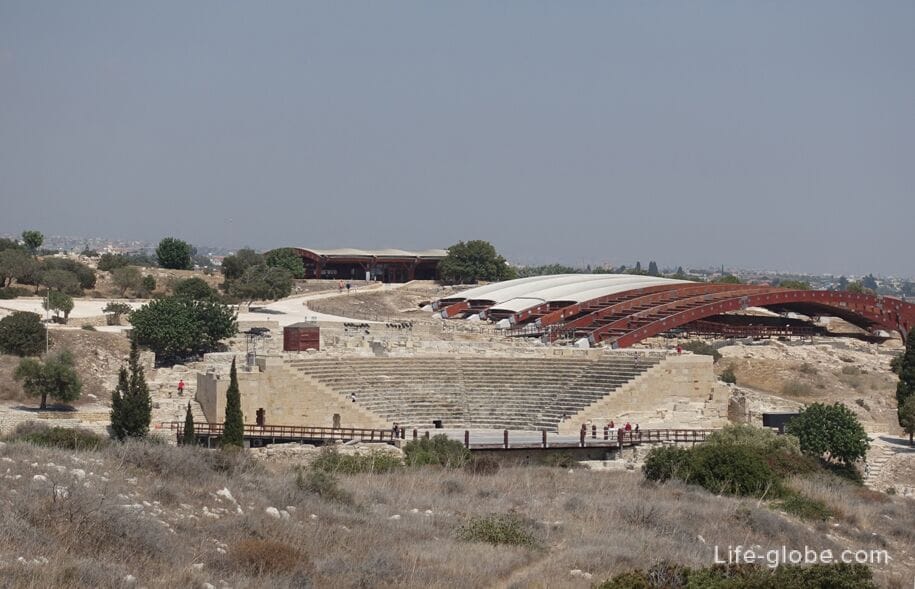
To visit the Archaeological site of Kourion can be anyone. Entrance fee, ticket price 4,50 Euros. Opening hours: Monday to Sunday from 08:30 to 19:30 hours. Attention! Opening hours and ticket prices are subject to change, please check before visiting.
The Archaeological site is a quite impressive area, which archaeological objects, paths and trails for transportation, arbors for rest, tourist information centre, car Park and ticket office.
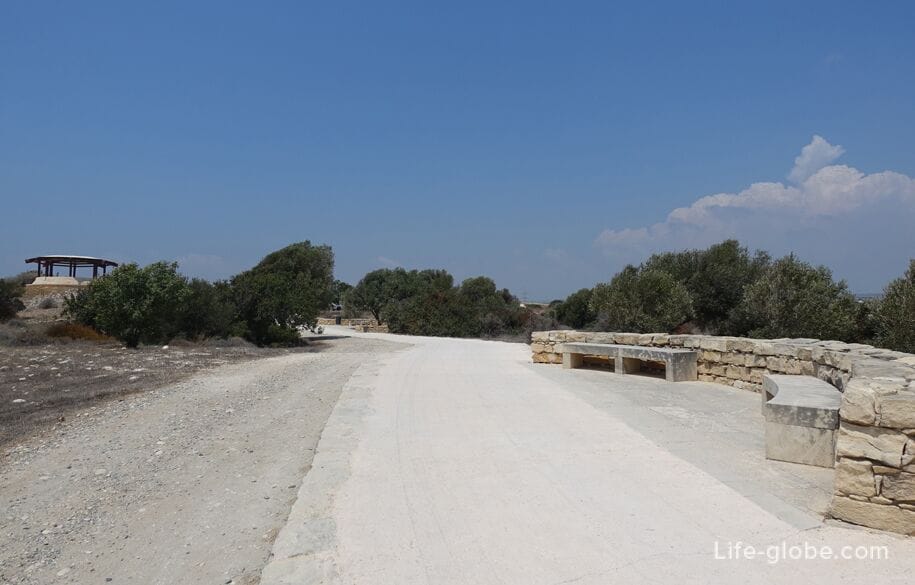
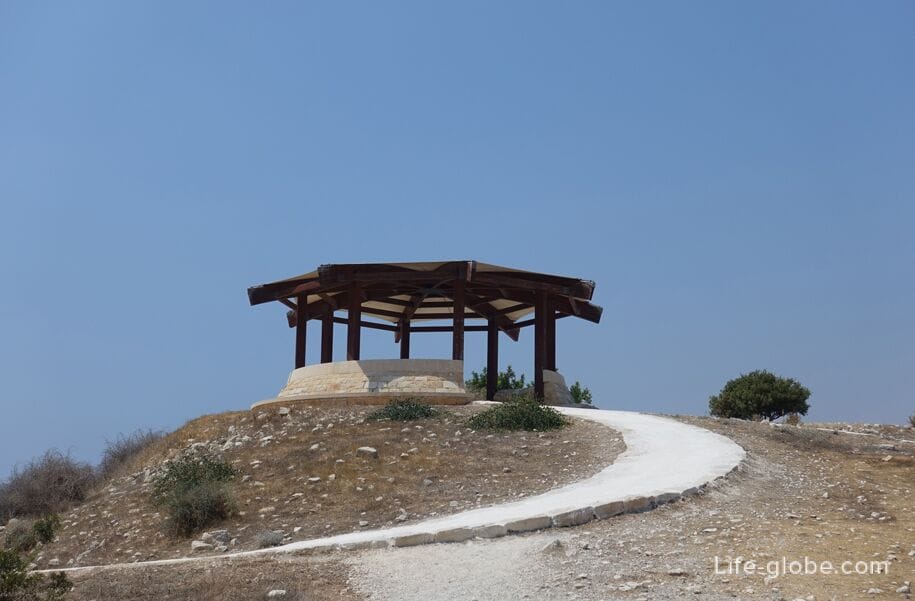
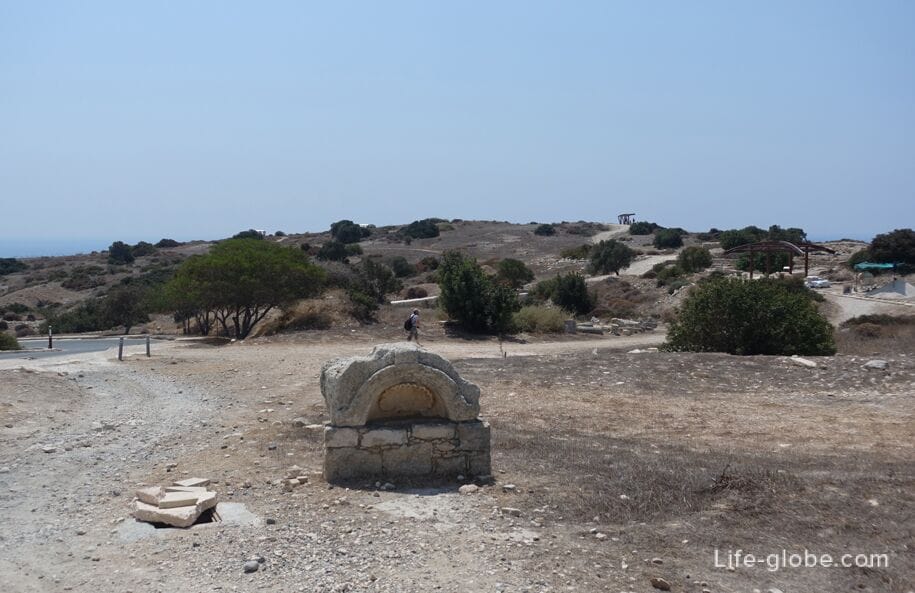
As Kourion is located on a hill from many of its locations offer stunning panoramic views over the Bay of Episkopi, the eponymous beach of Kourion and the surrounding area.


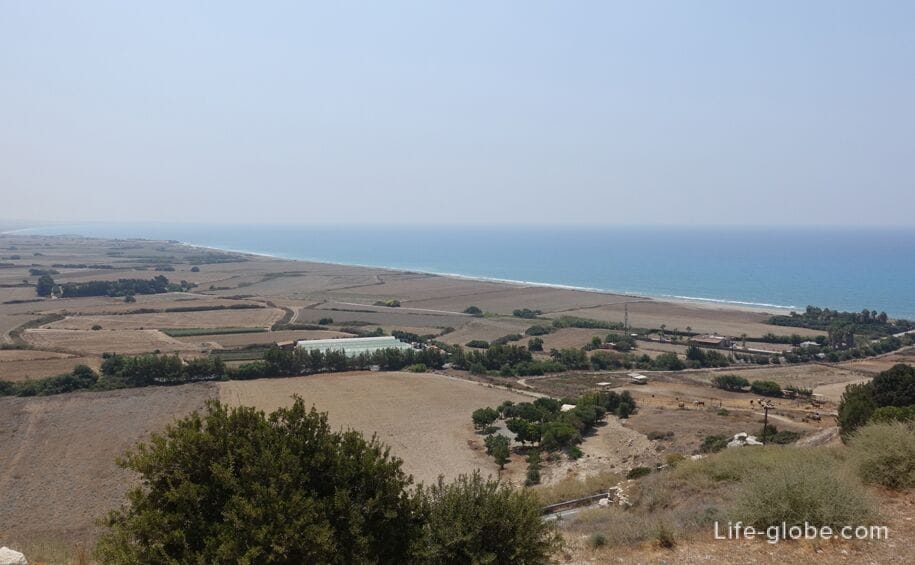
Tourist information center for visitors is located in the South-Eastern part of the Park, close to the Amphitheatre and house of evstoliya. Here places to stay, free information leaflets with the circuit of the archaeological Park, vending machines for snacks and drinks, a souvenir shop and the layout of the area.
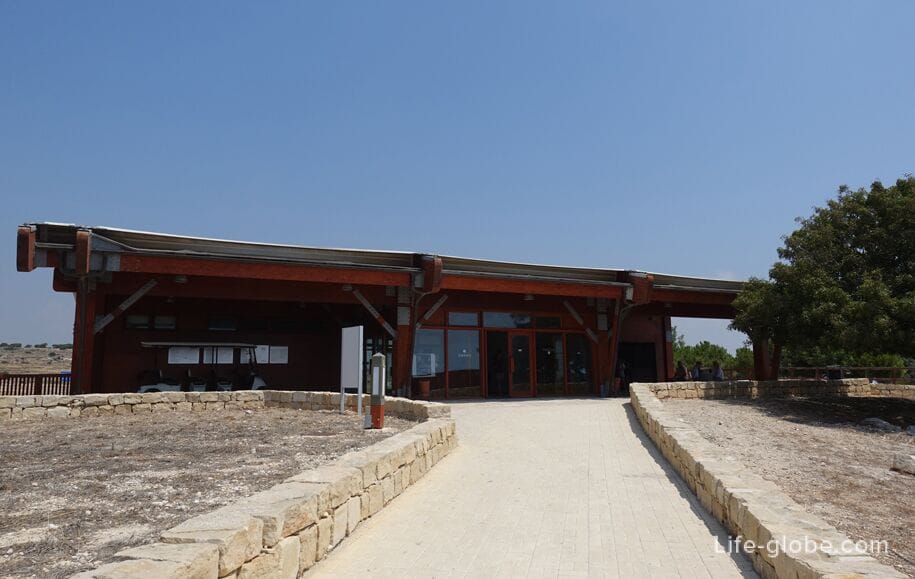
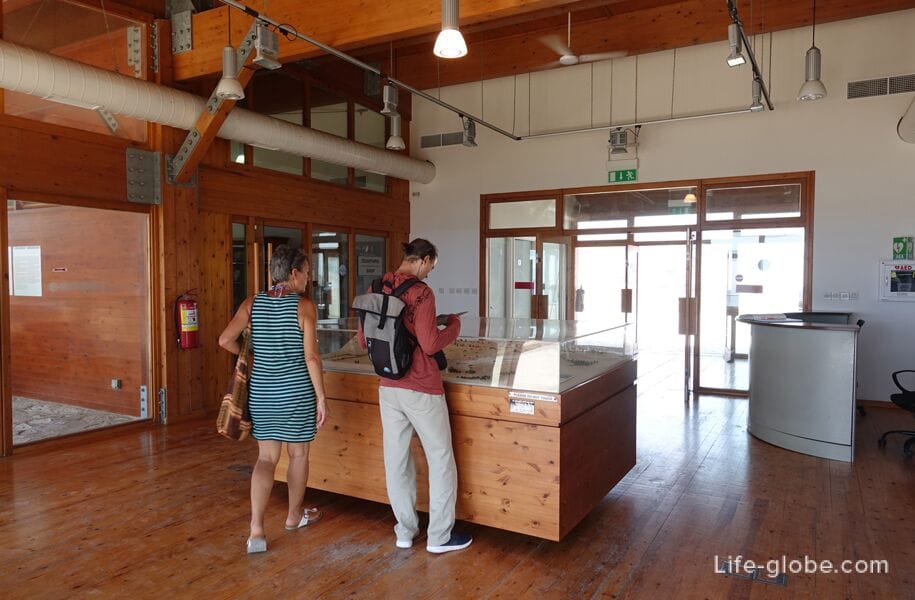
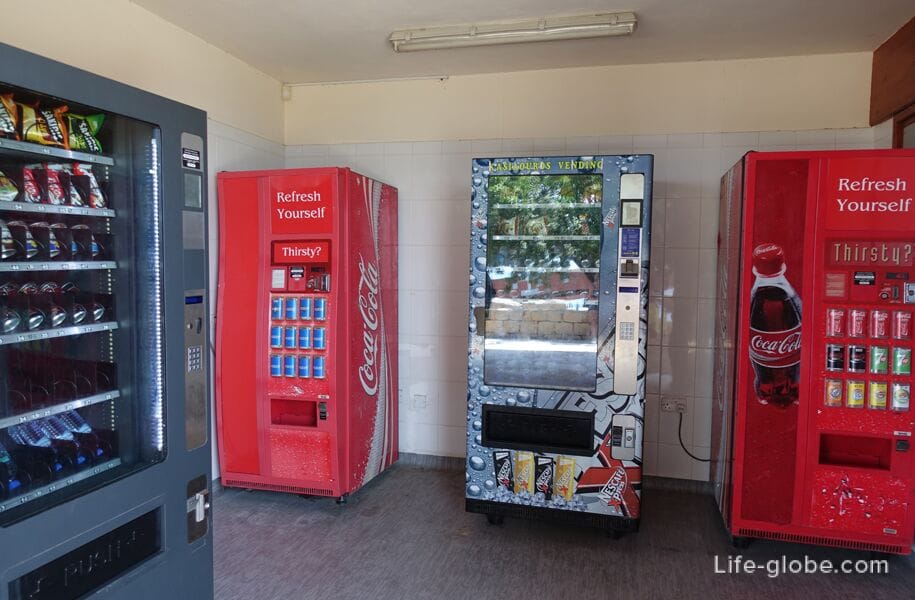
The information center from the road B6, Parking (coordinates Parking 34.665100 32.888500).
Archaeological Park Kourion include the ruins of the former town of Kourion: the Hellenistic (310 - 30 BC), Roman (30 BC - 330 BC) and early Christian (330 years to the mid - 7th century) periods.
Objects of Kourionamphitheater, early Christian Basilica, the Agora, the portico, the Roman Nymphaeum, the ruins of houses and baths.
Most visited, recognizable and, perhaps, one of the most interesting objects in the Park of Kourion.
Theatre of Kourion was excavated by an Expedition of the Museum of the University of Pennsylvania in the period between 1935 and 1950.
Initially, the theater had smaller size and was built at the end of the second century BC on the Northern slope of the cliff.
The design was built on the hill slope to use slope to partially sustain the weight of seats of the theatre. The seats are located so that the semicircular coverage exceeds 180 degrees and the audience could see not only what was happening on stage, but also panoramic views of the sea, which in turn intensified the effect of the spectacle.
During its history the theatre was modernized, rebuilt and reconstructed.
The current remains of the theatre was completely restored. Now the theatre is one of the venues of the International festival of ancient Greek drama.
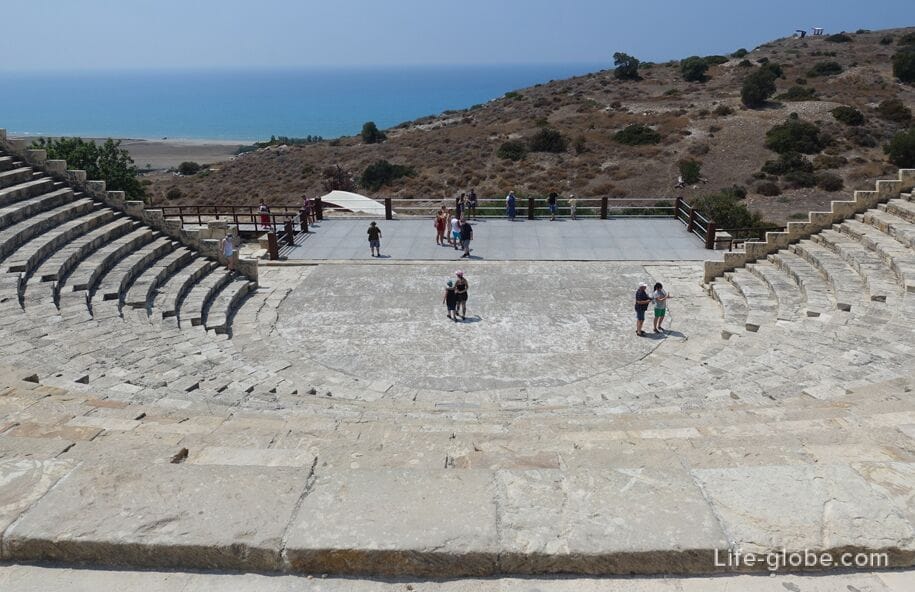



Just above the amphitheatre is the home of Eustolios.
In the house evstoliya are preserved unique floor mosaics, so the building remains covered roof that protects the mosaic from weather conditions.
Floor mosaics have two inscriptions indicate the relationship evstoliya as with paganism, and with new at that time religion - Christianity.
House evstoliya was built at the end of the fourth century, over the remains of the destroyed in the middle of the 4th century buildings, and after much rebuilt.
In the first years of the fifth century on the North side of the house was built a bathing complex (baths). In the Annex of a house and the bathroom on the North side were located more than thirty rooms. South peristyle courtyard was equipped around a Central pool and was a Central element of the household, its porticoes were decorated with intricate mosaics. And related iconography included figurative images of fish and birds (grey goose, Guinea pig, Falcon, partridge and pheasant).
The baths remained in use until its destruction in the mid-7th century. House evstoliya was probably built as a private estate, but in the early fifth century was transformed into a public space for bathing.

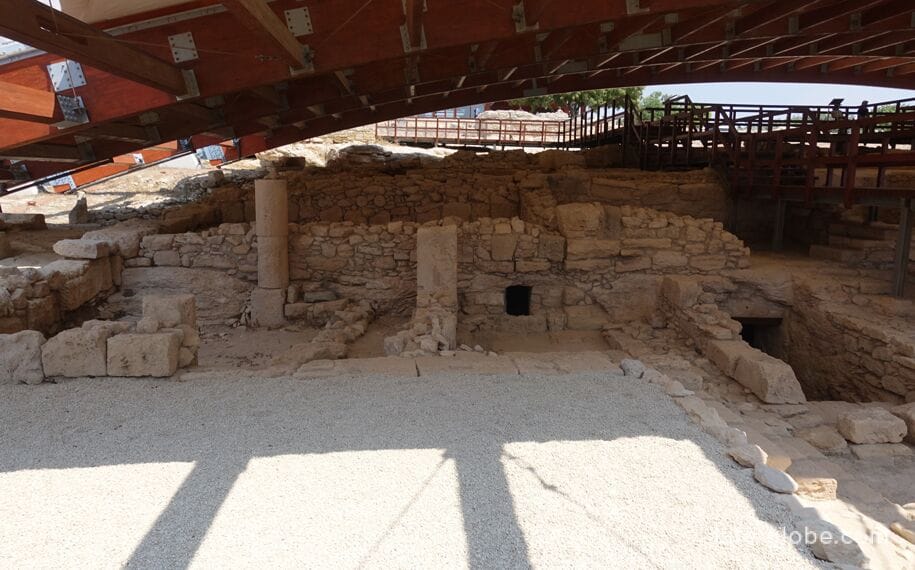
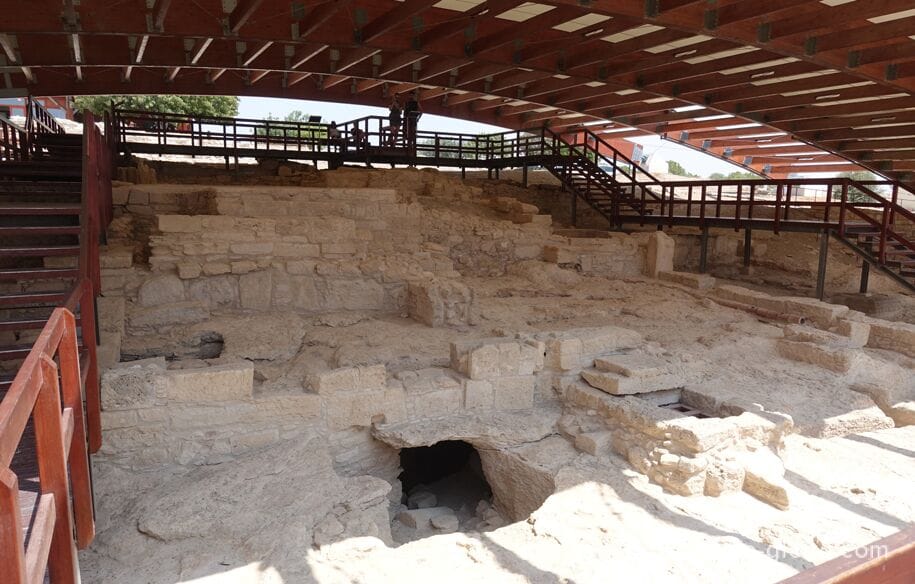
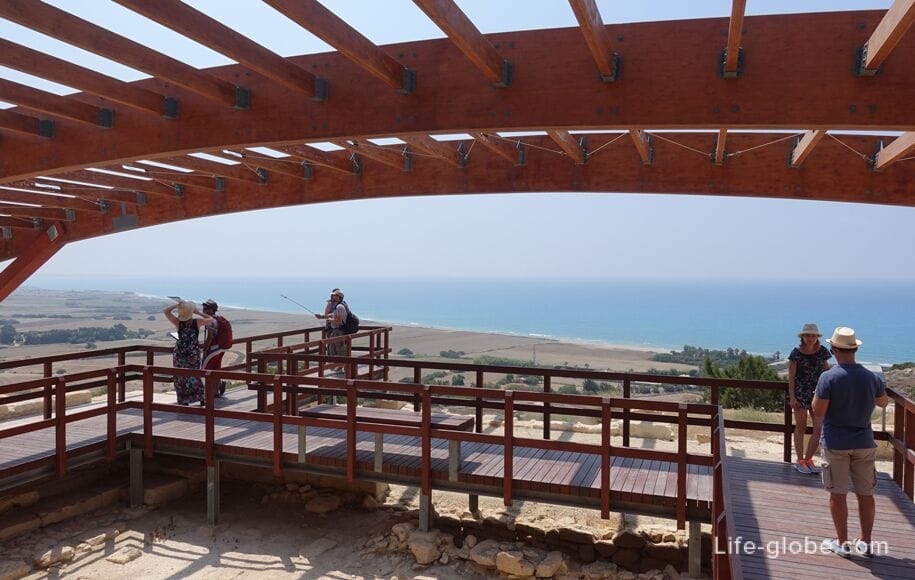
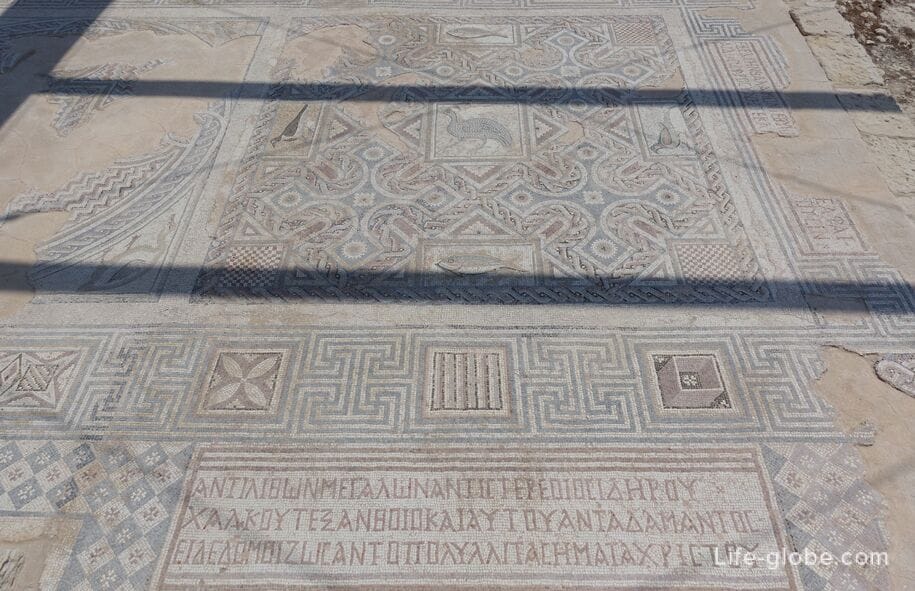
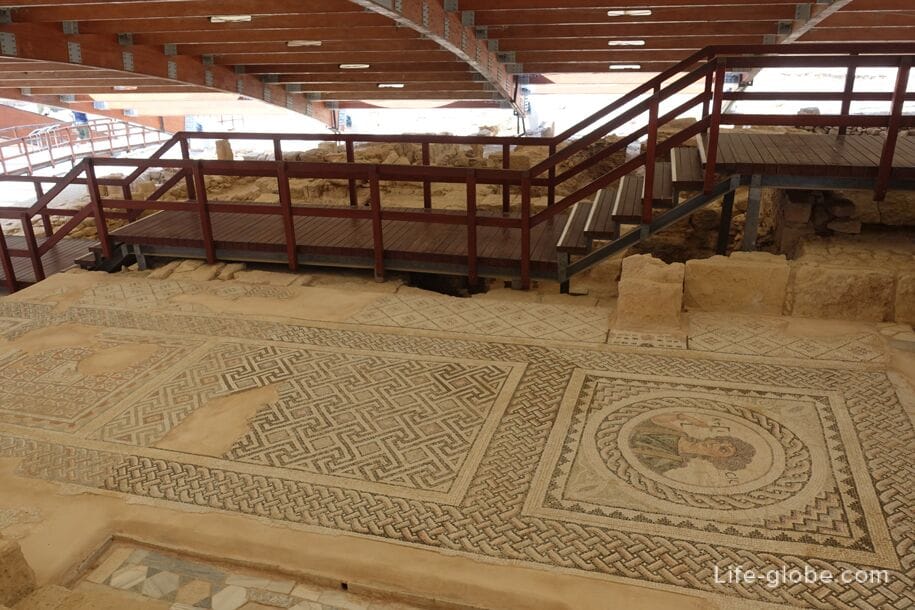

Three archaeological Park are located together North of the amphitheatre and house of evstoliya.
The forum of Kourion, as it appears today, was built in the late second or early third centuries. The forum or Agora was the center of social life, consisted of a Central pavement with a colonnaded portico, located along its Eastern, Northern and Western sides.
The Eastern portico had a 65 metre length and 4.5 meter width, with a colonnade facing the courtyard. The North portico provided access to the monumental Nymphaeum and the steam room with bath complex, built around a nymph on the North side.

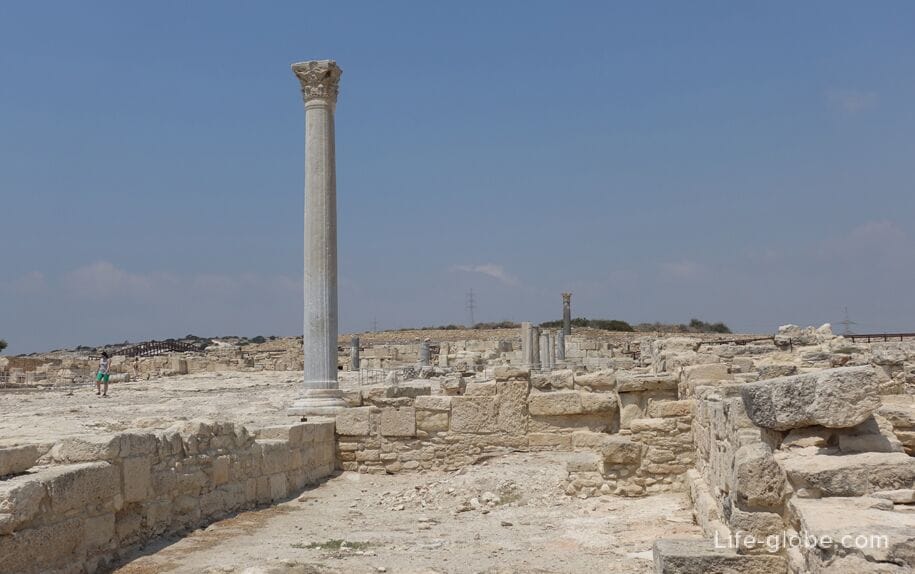

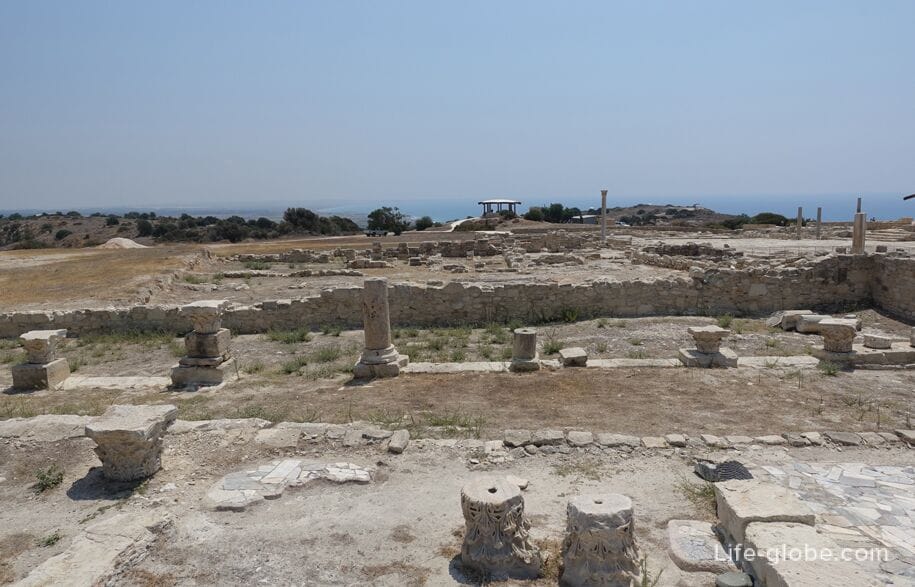

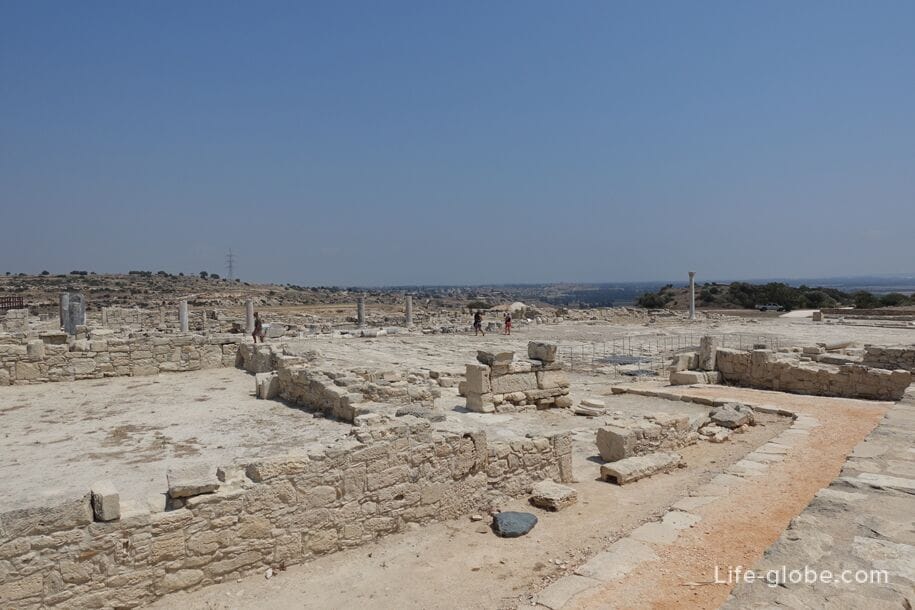
The Nymphaeum was built in four stages, in the period from the first century BC until the mid-seventh century.
At a very early phase of the Nymphaeum consisted of a rectangular room with a fountain and a rectangular pool. After the earthquake, the Nymphaeum was rebuilt between 98 and 117 years.
After the destruction caused by earthquakes in the late fourth century the Nymphaeum was rebuilt as a three-aisled Basilica with apses along the South wall. The structure was used as a temporary Church between 370 and 410 years in the construction of Church land in the West.
In the mid-seventh century, the Basilica was abandoned.
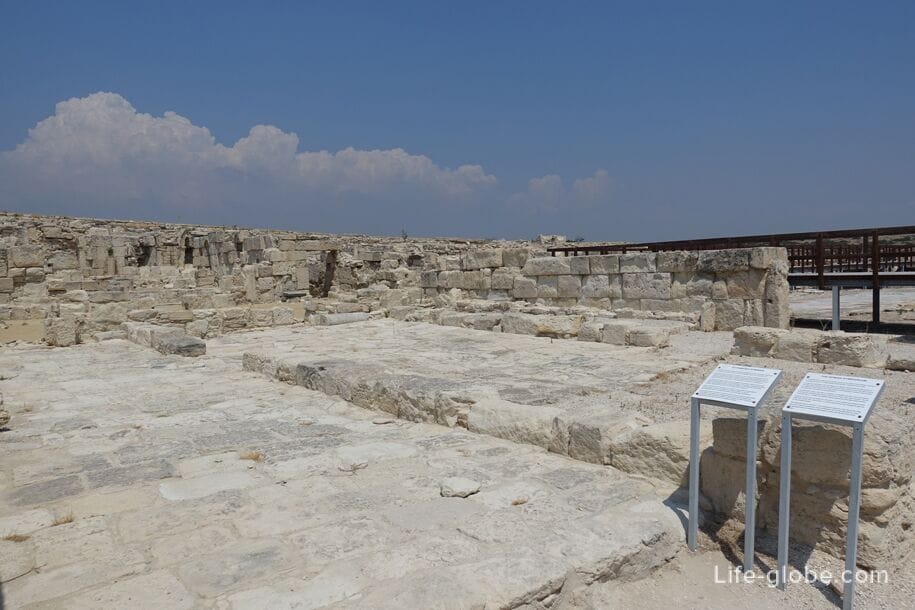
Lime kiln from the early medieval period.
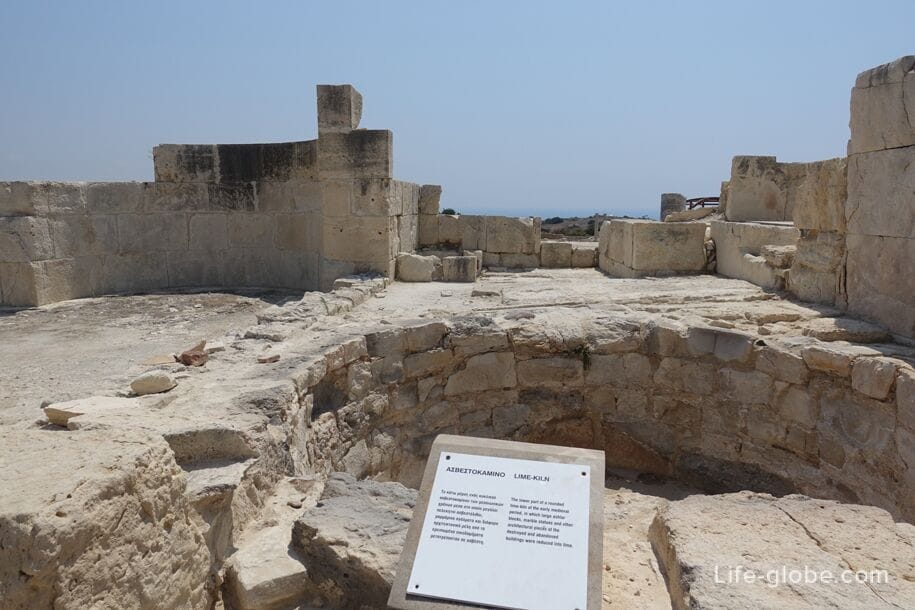
Part of the pebble mosaic floor of the late Hellenistic period (75-50 BC) pattern in brown, white and black and grey. Served as a decoration of big churches.
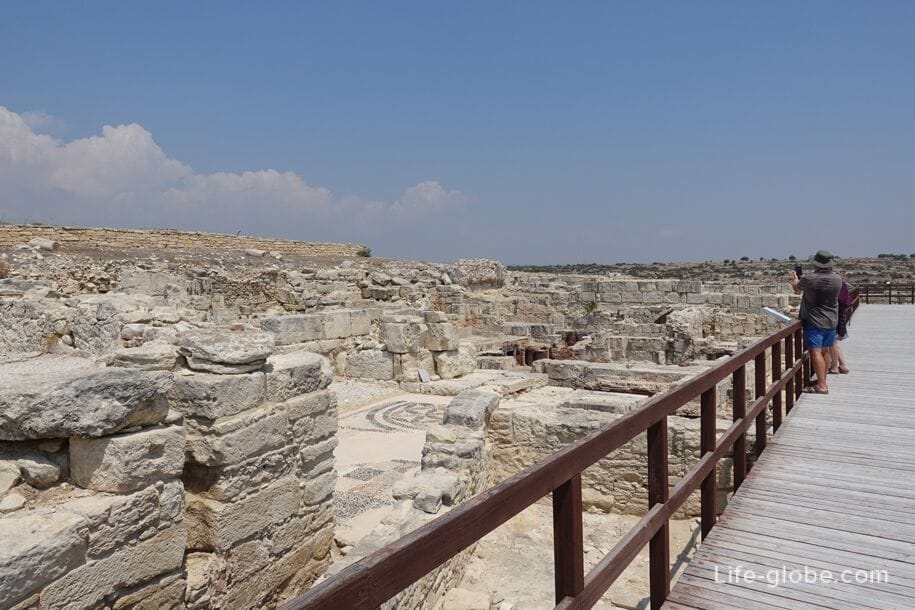

Bath (bath) surrounding the Nymphaeum on the North-Western end of the forum, was built in the early and mid-fourth century ad after the repair Nymphaeum.
The bath was divided into Eastern and Western wings of the Nymphaeum. The Western baths were located a series of axially aligned baths along the North-Western wall of the nymphs.
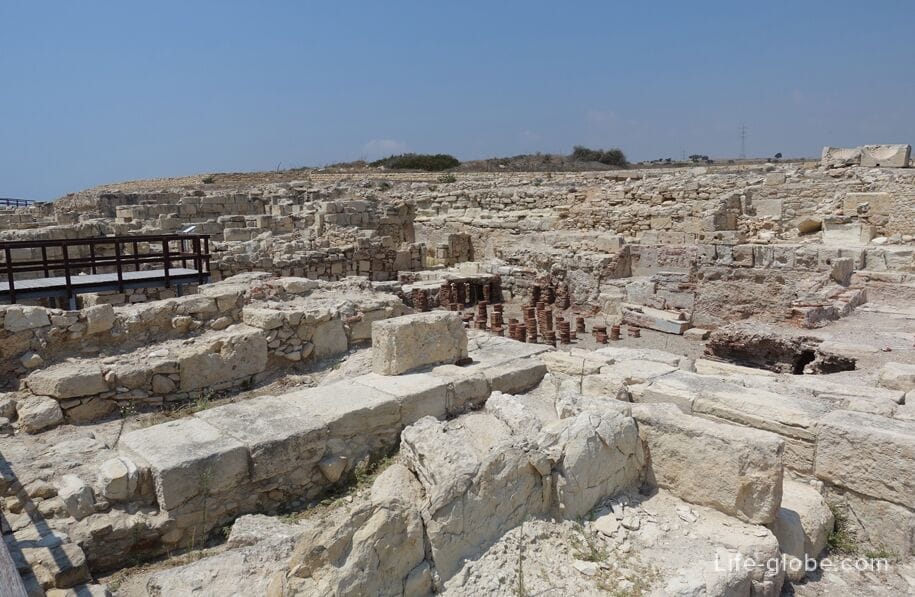

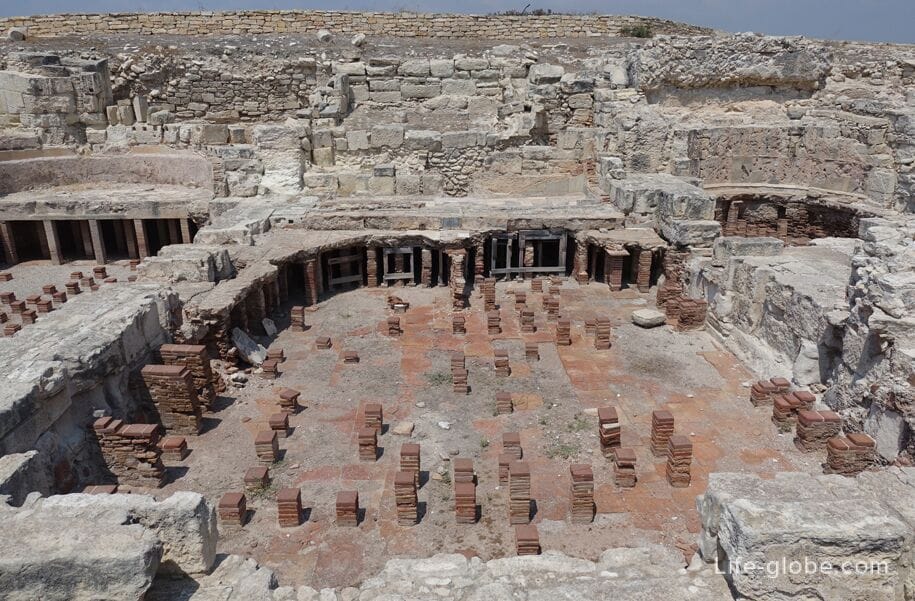
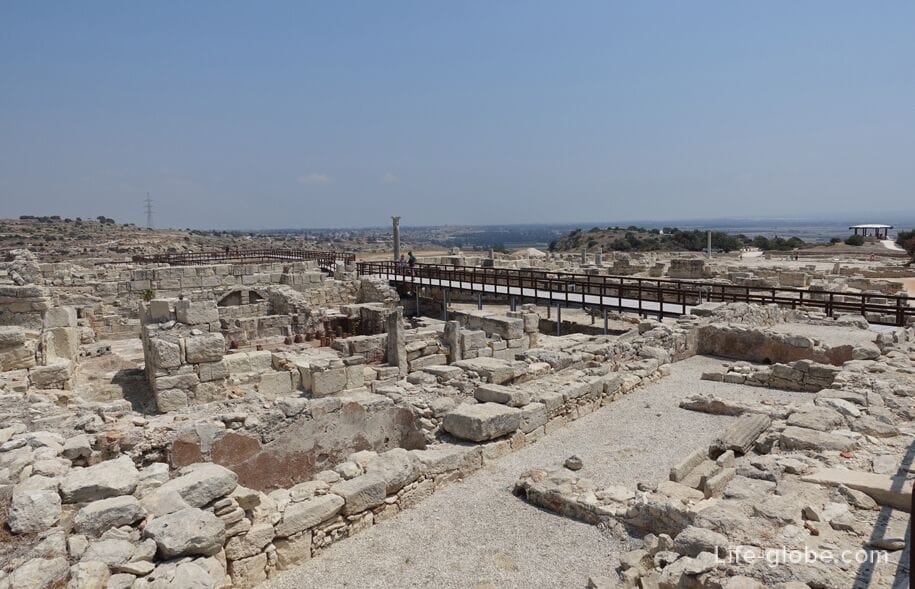
Hexagonal cold pool, spacious, in those days, the size of 9.25 meters in diameter and 1.50 meters deep.
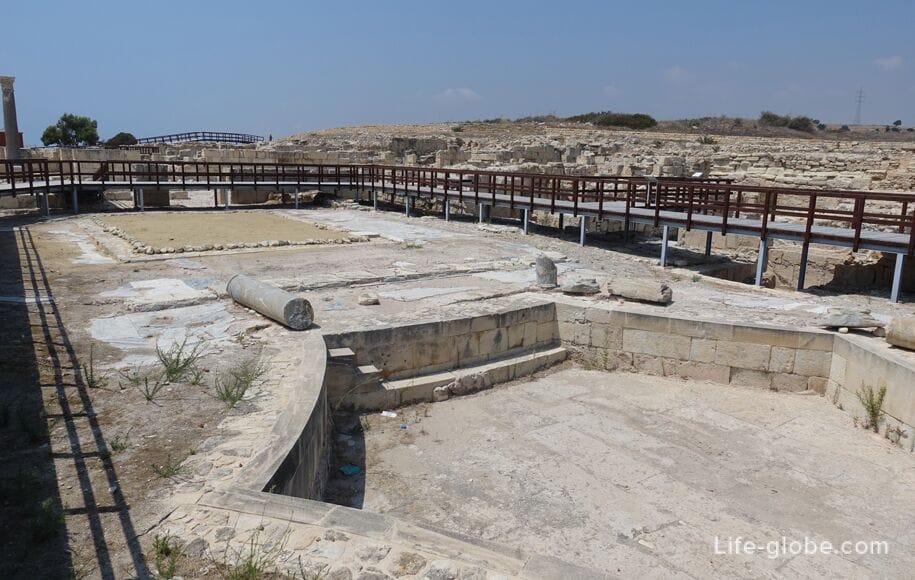
The earliest structural remains, excavated near the Acropolis, was discovered in the North-Western part of the Park.
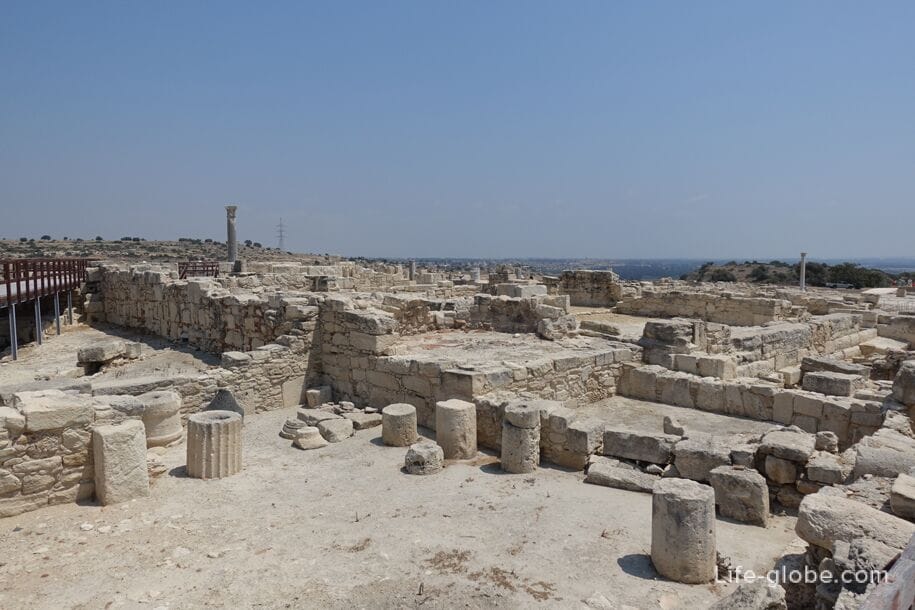
The remains of a stone private houses, late classical and early Hellenistic periods (335-315 years BC).

Part of the South-Eastern and North-Eastern walls of the great pyramid building of the late classical period. Are the earliest architectural monuments that were excavated in the former city of Kourion (the 350-325 BC).

The remains of private houses of the early Christian period (early 5 - mid 7 centuries).
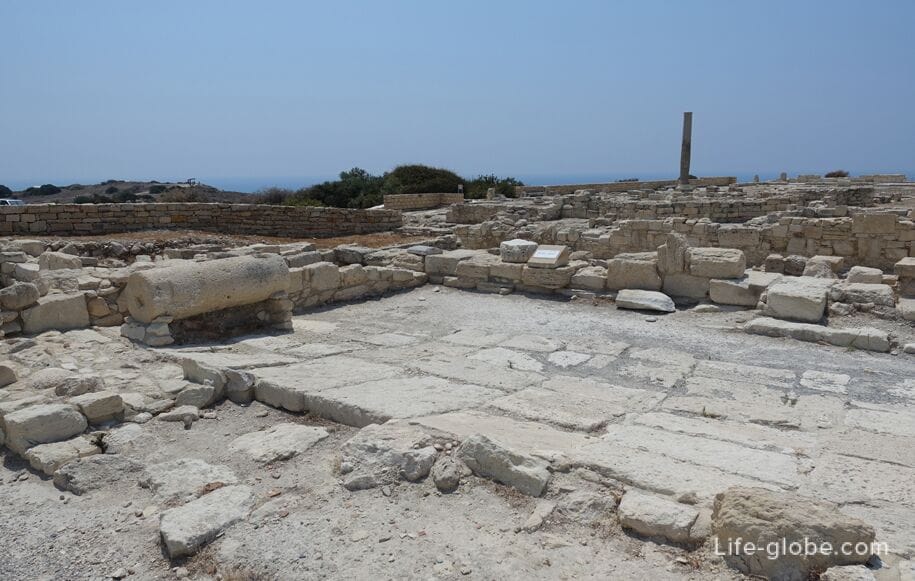
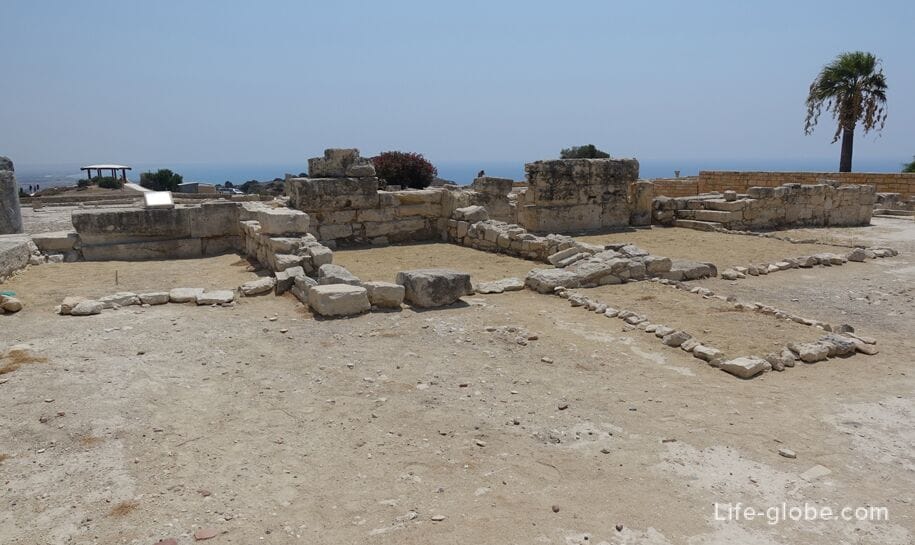
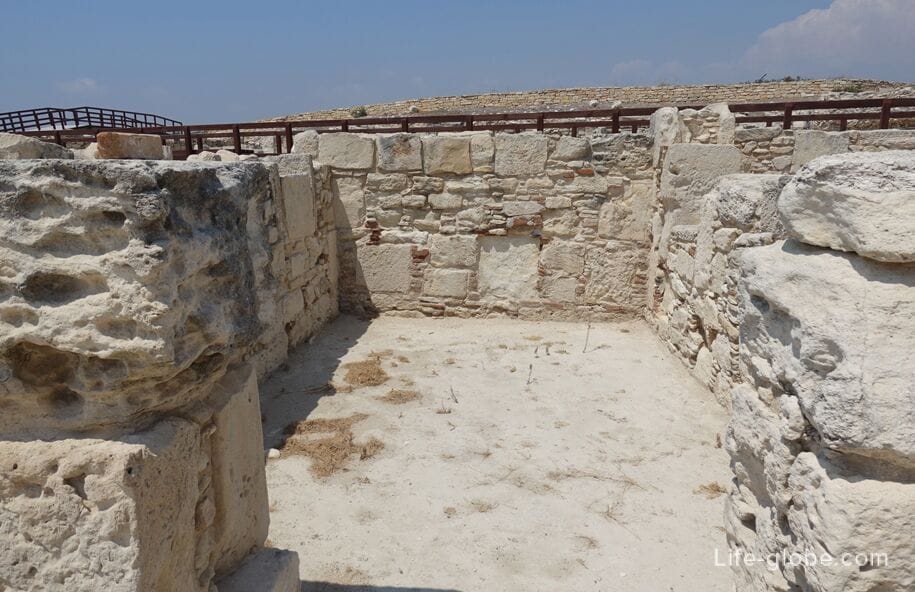
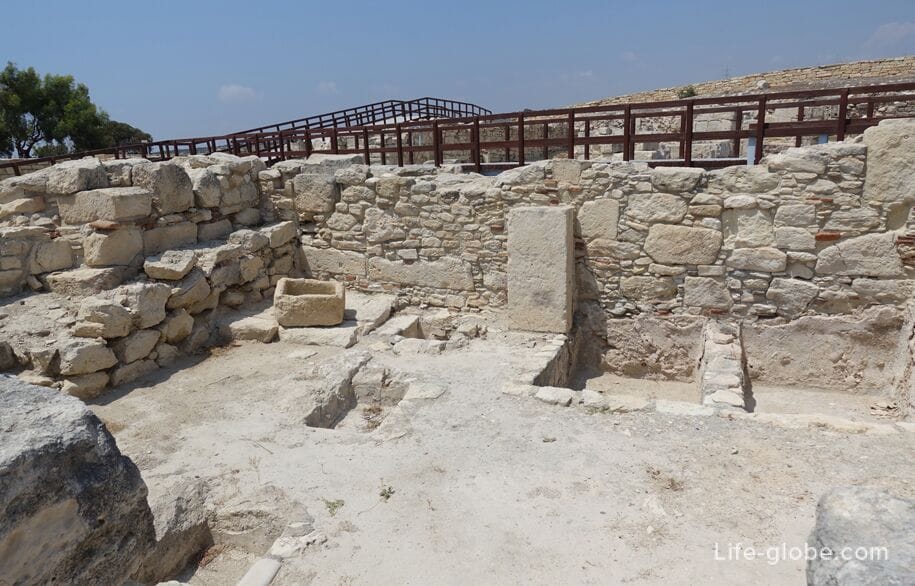
The house is located just North from the baths and forum.
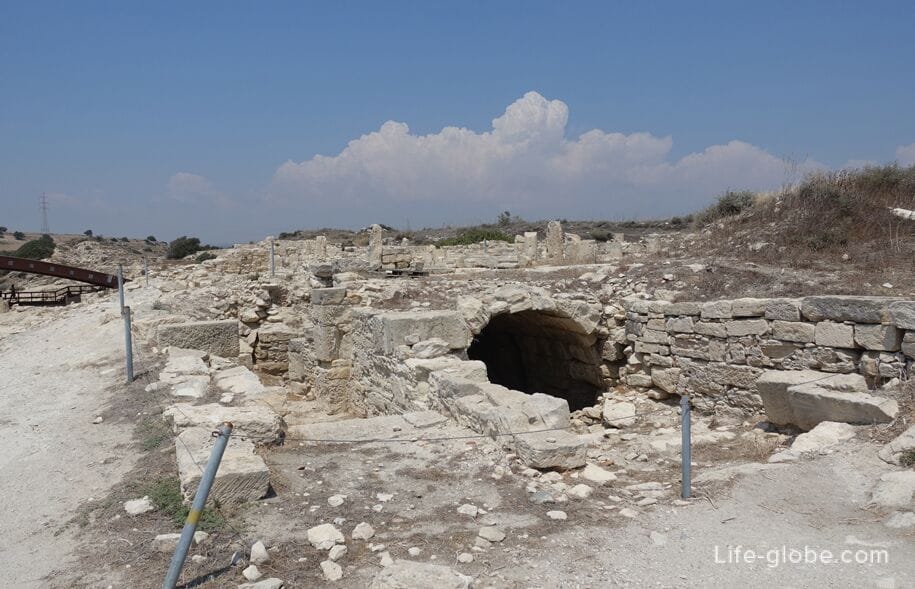

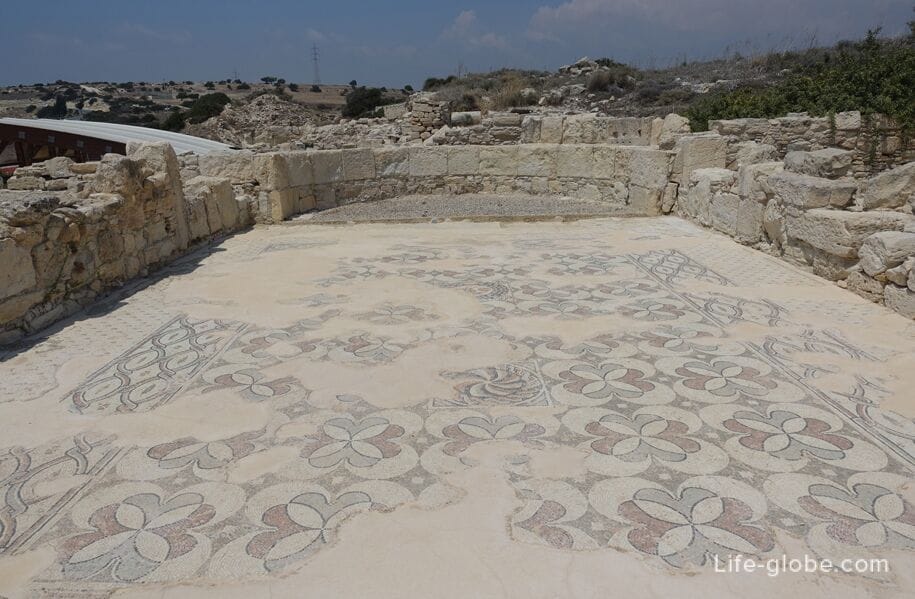
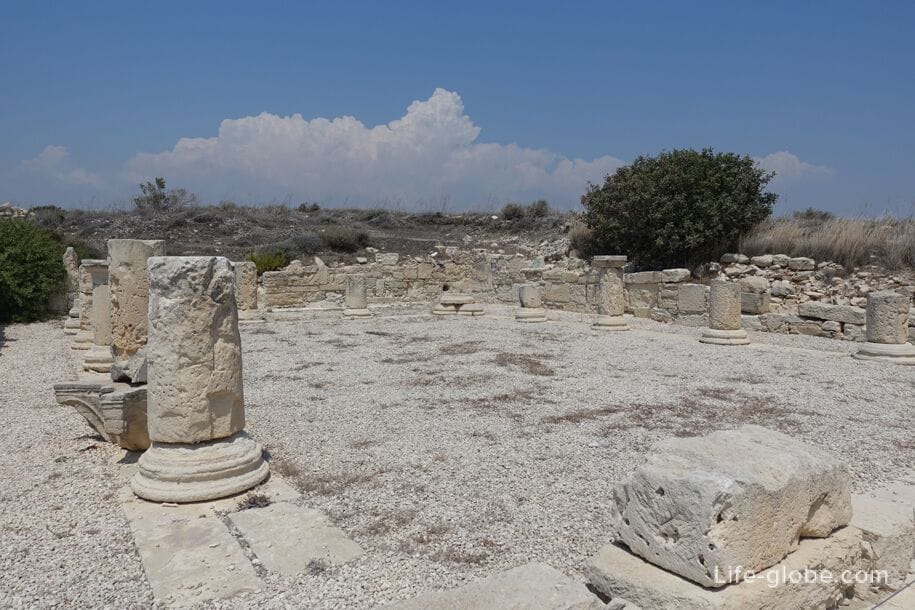
The so-called House of Gladiators is North of the House with Triclinium. Structure refers to the end of the third century ad and was originally interpreted as a luxury private residence, the ruins later became associated with public palaestrae. A later interpretation of the purpose of the structure is confirmed by the absence of certain buildings suitable for dwellings of those times, however, the consensus is still no.
The main wing of the house was situated around a Central peristyle courtyard. The Northern and Eastern porticoes of the atrium contain two panels depicting gladiators in combat, the only such mosaic in Cyprus. From the pictures on the floor mosaics of the house got its name - "the house of the Gladiators".
The building was heavily damaged during the earthquakes of the late 4th century, but the East room, apparently, were used until the mid-7th century.
The house of the Gladiators is also under a pergola roof, for the preservation of floor mosaics from the hot sun and weather.
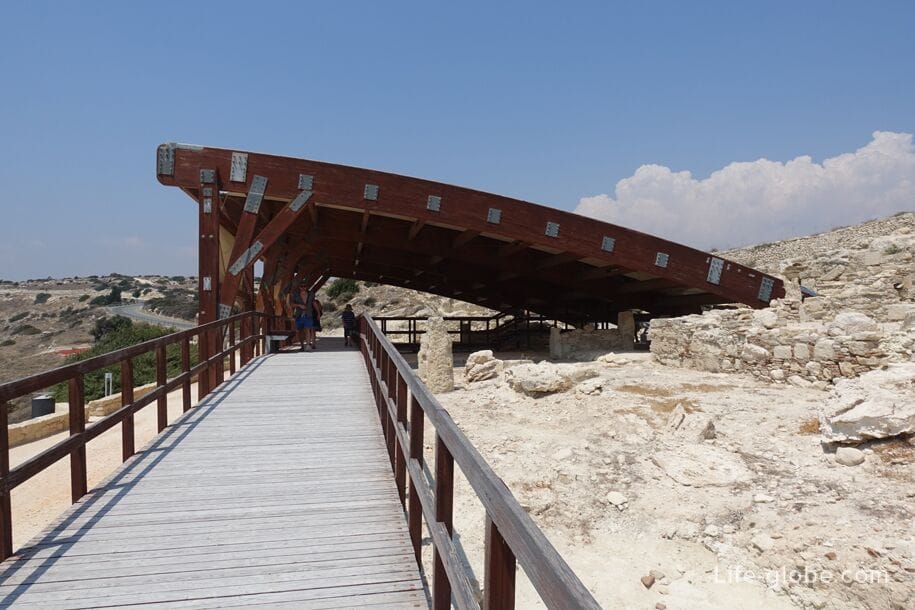
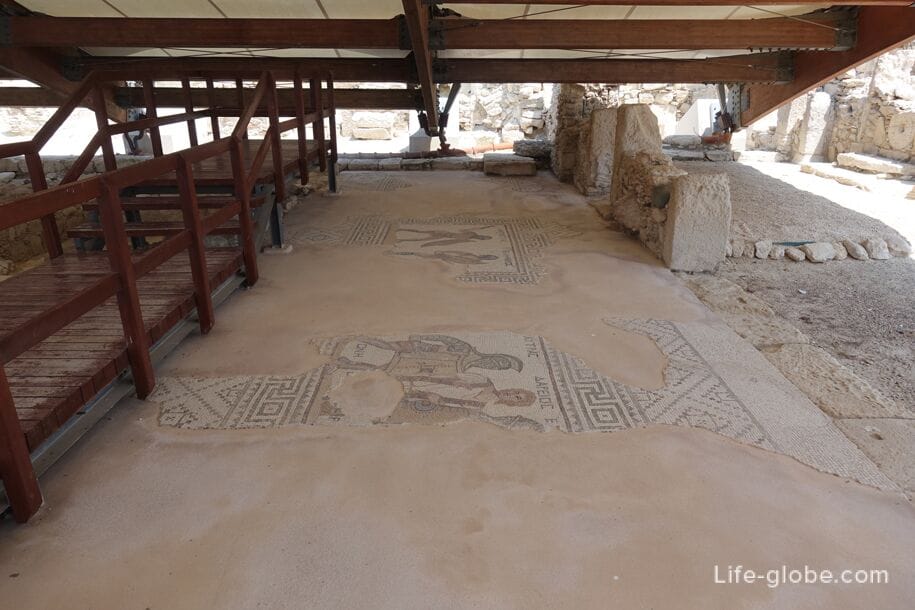
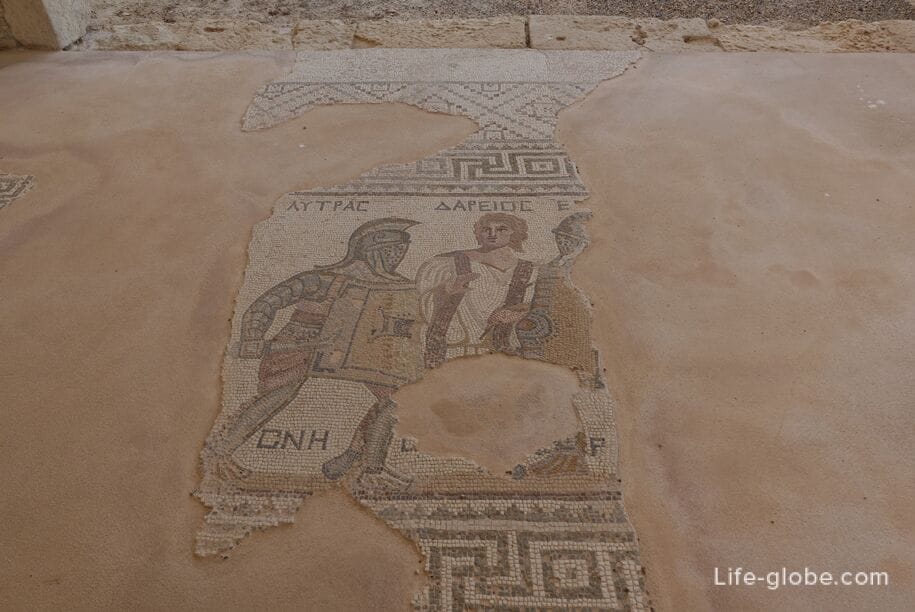
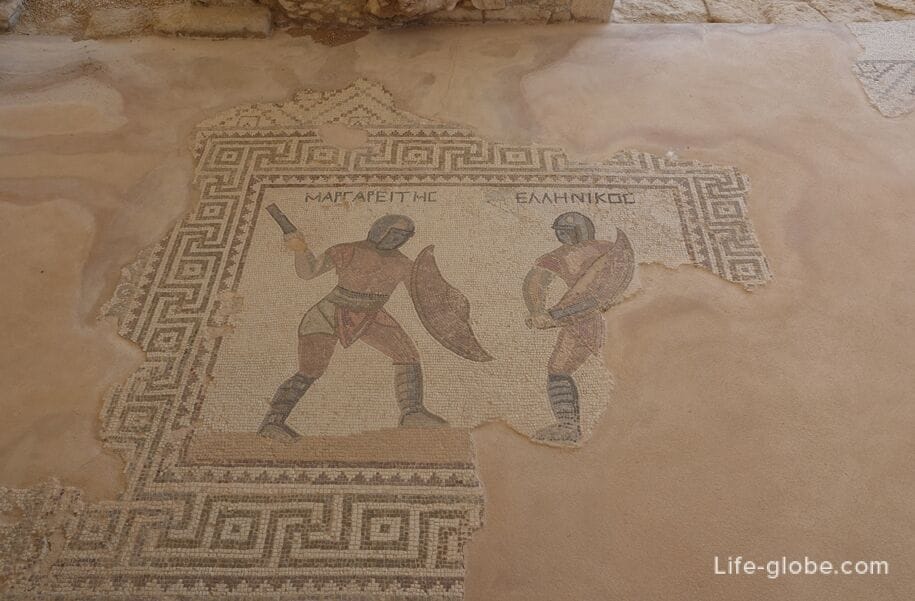

The house of Achilles and House of Achilles is situated on the North-Western edge of the archaeological Park, near the street leading to the sanctuary of Apollo of Galata.
In ancient times the house was outside the city walls. Built in the early fourth century ad, the structure was interpreted as a public audience hall for Imperial and provincial dignitaries. Its exact function remains unknown.
Structure arranged around a Central peristyle courtyard, the North-Eastern portico, preserved fragmentarily preserved mosaic pavements. The most important of these mosaics depicts the exposure of the person of Achilles, Odysseus at the court of Likamed from Skyros when his mother, Thetis, hid him there for women to go to war against the Trojans. Another room contains a fragmented mosaic depicting the first bath of Achilles. In another room a fragmented mosaic depicts Ganymede.
The structure was destroyed in the earthquakes of the end of the fourth century of our era.
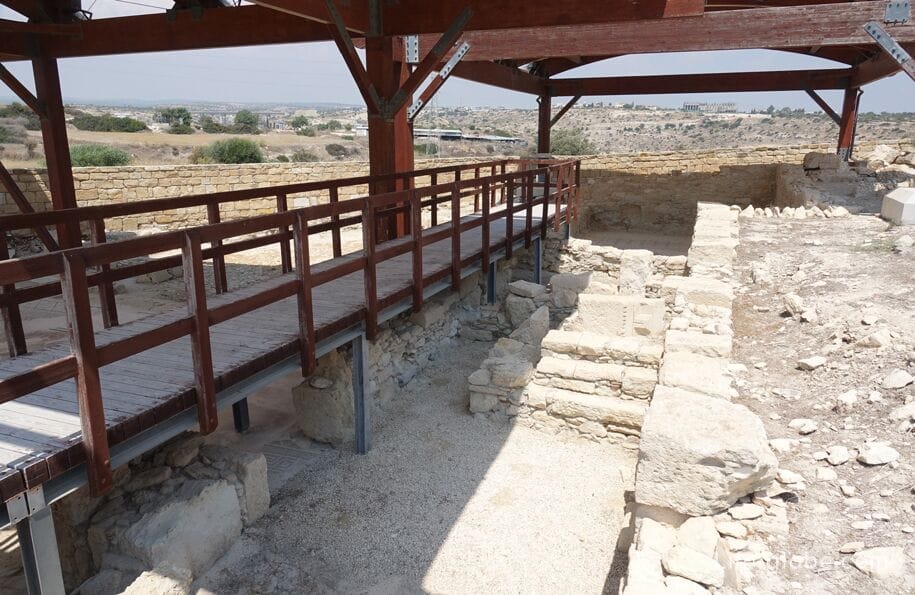
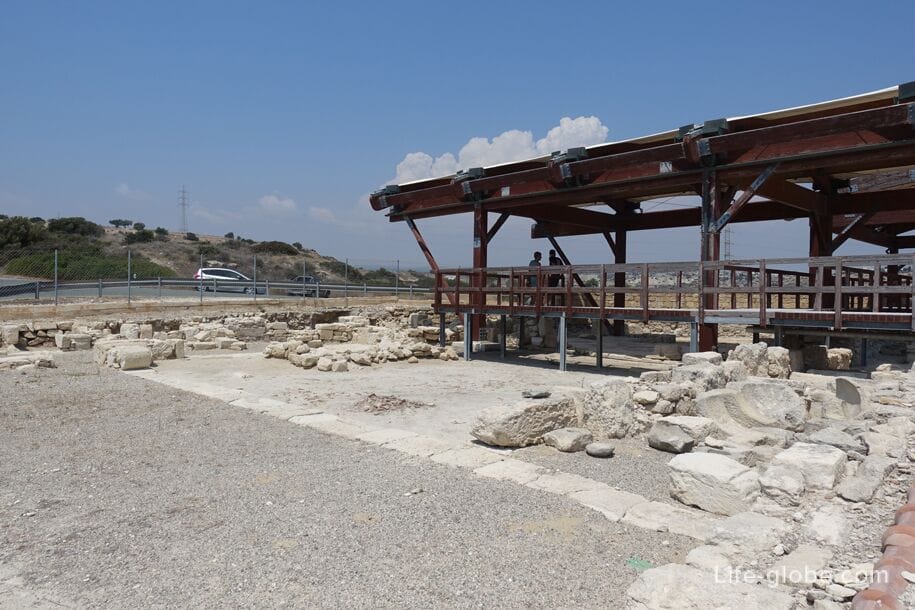
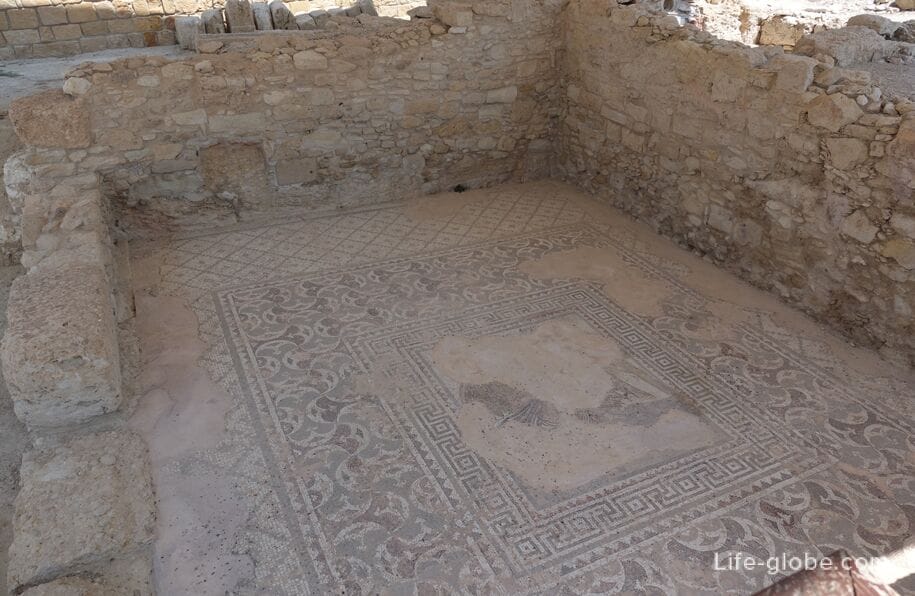
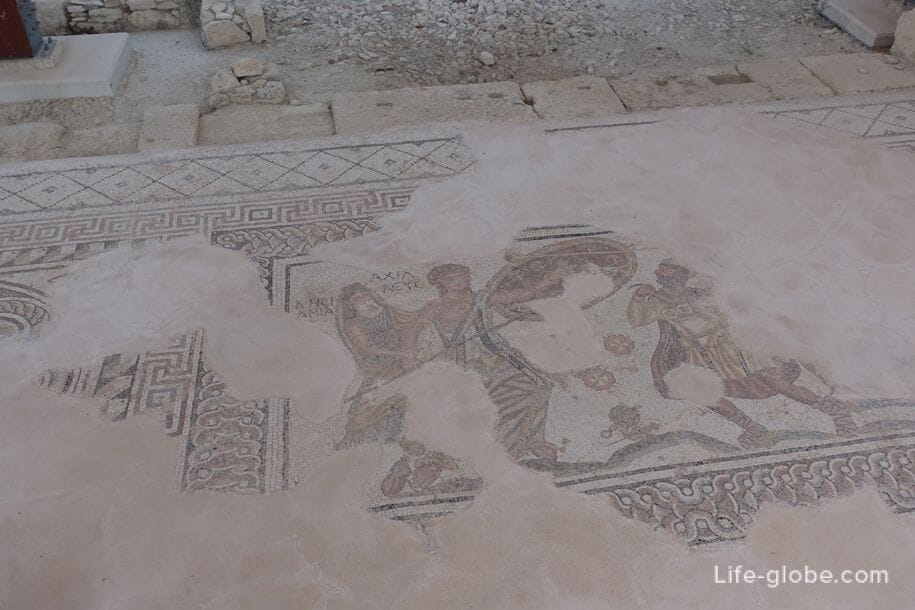
Early Christian or Episcopal (Bishop's) Basilica of Kourion was built along the crest of the rocks, to the South-West of the forum. The construction dates back to the 5th century and the 6th century was restored. Perhaps the Shrine was a Cathedral of the first bishops of Kourion.
Surviving fragments of the Basilica indicate that this was quite the impressive building. The Basilica was decorated with wall paintings, floor mosaics and marble sculptures.
The Basilica consisted of a Central nave with galleries at the outer sides of each passage. On the West side of the narthex (vestibule) - input space, which is intended for people who did not have the right to enter inside the temple. Attached were diatonic (sacristy) - a special room where he kept the Church vestments and utensils. To its North was an Annex, originally had two floors, and was a quarters of the Bishop of Kourion. Near the Basilica was the baptistery (baptisterium) in the form of a small three-aisled Basilica with a narthex and an atrium.
The Basilica was destroyed during the Arab raids in the seventh century, after which the Bishop of Kourion was displaced inside the country.
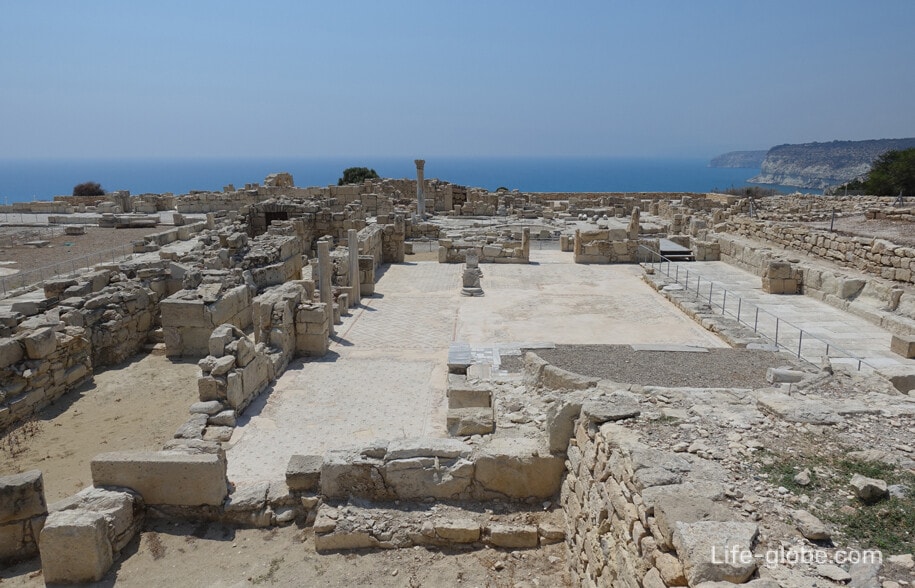
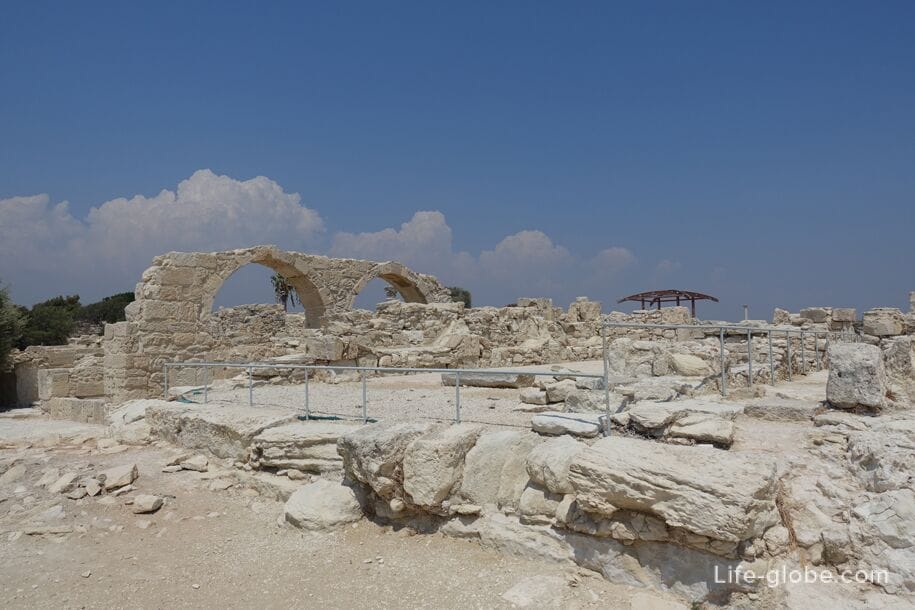
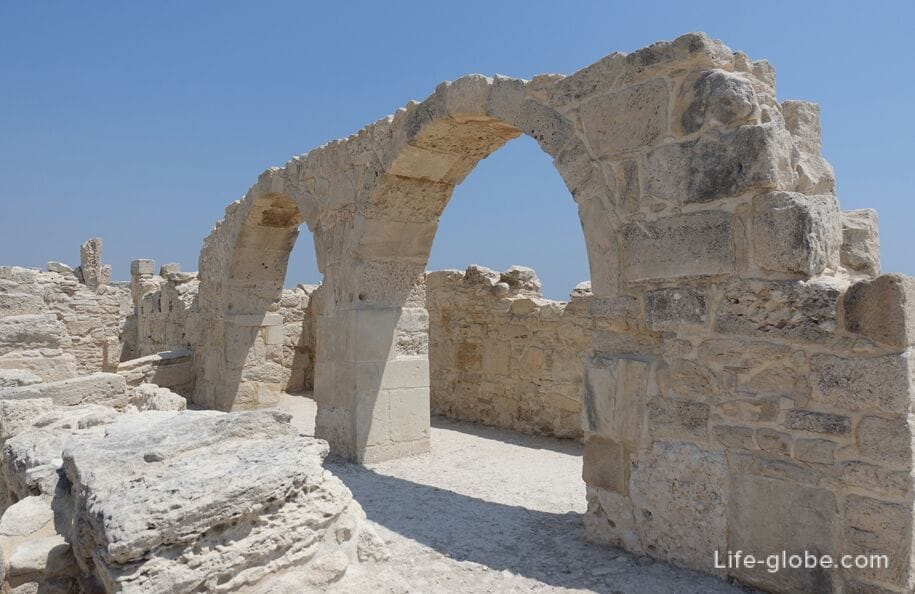
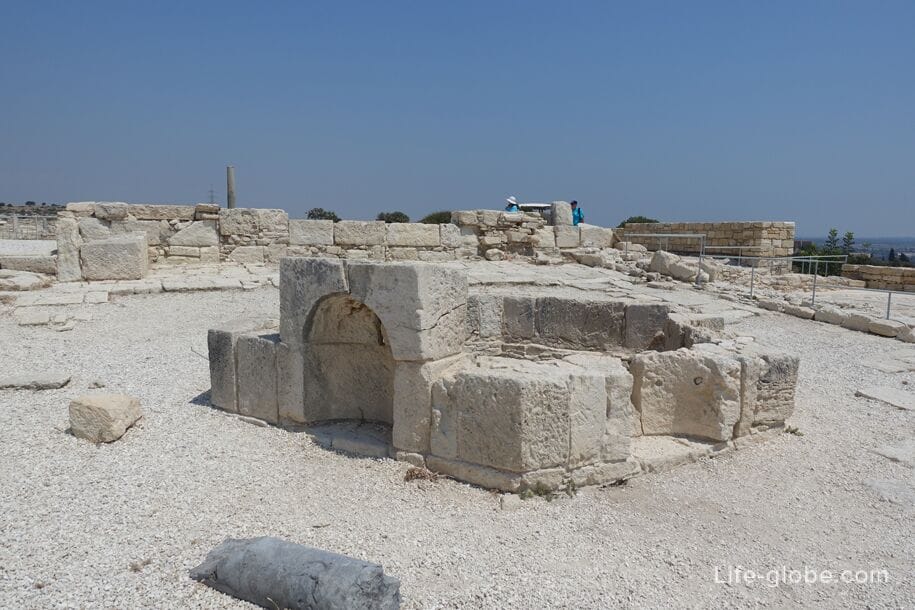
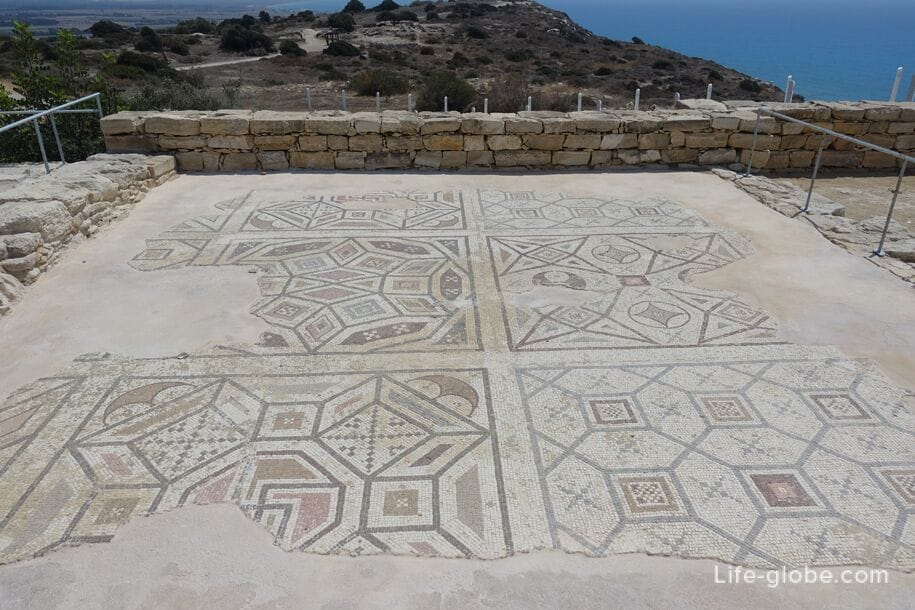
The so-called House of the Earthquake is located just below the Basilica.
The remains of internal structures, contain dramatic evidence of the earthquake that destroyed many of the objects unearthed in the area.
The house in the initial stages was probably built in the late first or early second century of our era. Later the house was rebuilt and expanded to meet the changing needs of the residents.
The destruction of houses in the earthquakes of the end of the fourth century and the absence of further restructuring in this area, give a dramatic representation of life at Kourion.
Among the evidence of destruction was also found the remains of two human skeletons in the pose of the arms; the remains of a minor who fell from the top floor when it collapsed the floor; the remains of a young woman with a baby, which holds male approximately twenty-five years; and three sets of skeletons of adult men aged 25 to 40 years.

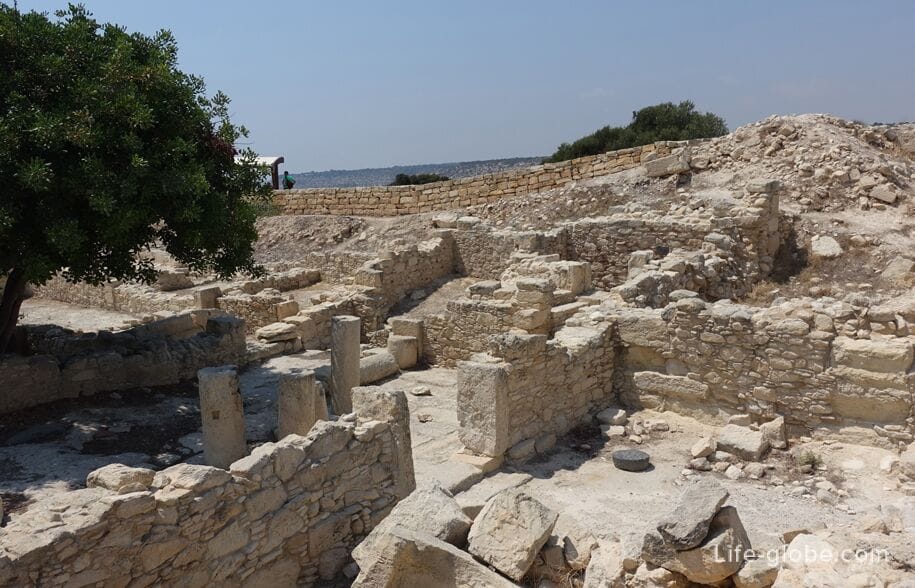

Probably looked like this House before the Earthquake natural disasters


By taxi or car from any point of Cyprus. Car hire in Cyprus...
Buses from Limassol
The bus station with the Old hospital (Leontiou EMEL Central bus station):
- the bus № 16B - direct bus to the Site (the archaeological Park and the beach). Stop near the Church of Agios Ermogenis. From the stop to the right and 200 meters on the road to the South-West entrance to the Park, Kourion;
Photo of the road from the Church to the archaeological Park Kourion
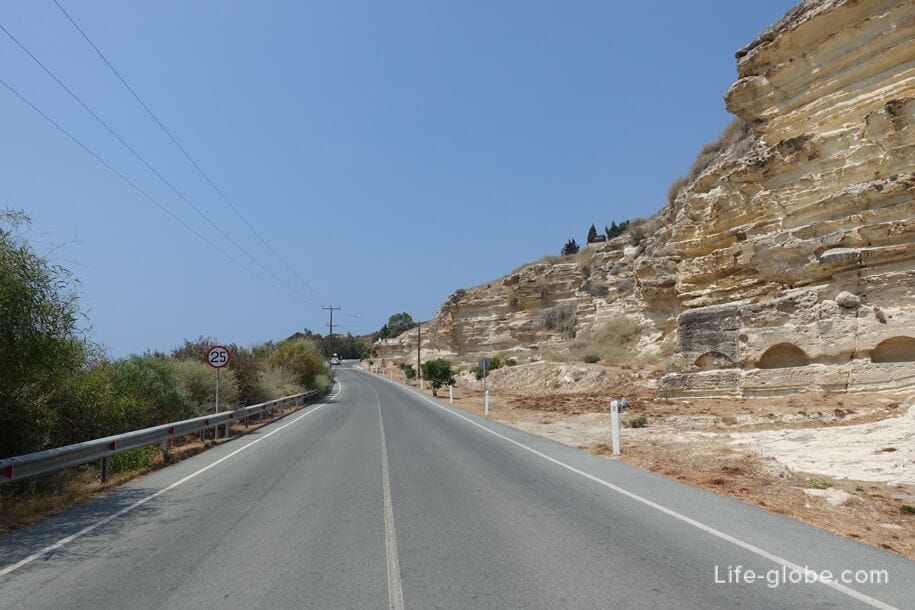
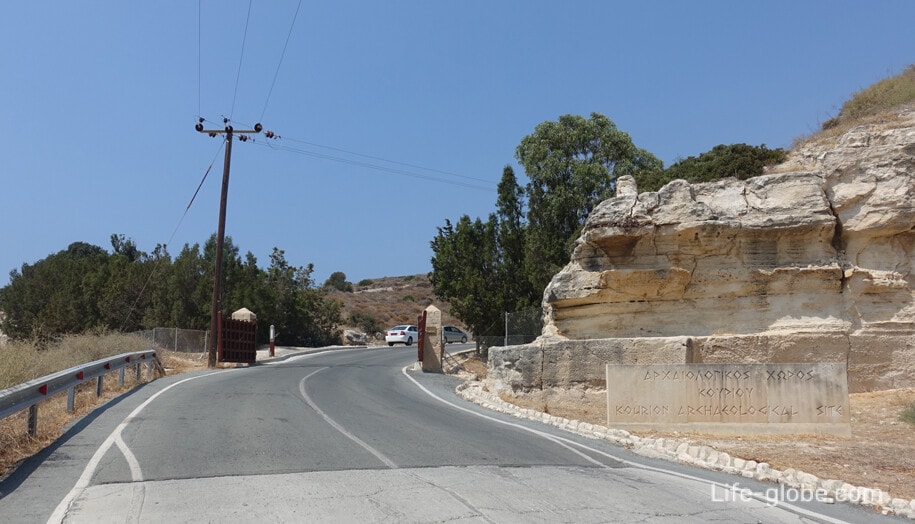

- buses №№ 16 and 16A can be reached 18th street diocese of Limassol (the landmark on the map: Episkopi ACS Service Point). Distance from the bus stop to the Archaeological Park Kourion about a mile.
During our visit to Kourion all buses from Limassol was under the same number - 16, no splits on A and b, however, the routes were different. If you go only by bus (16B), we advise you to ask the drivers whether the bus to curio.
The castle of Kolossi buses № 17. From Kourion to the castle about 5 miles, you can take a walk and grab two objects and all that is on the way.
The duration of the trip, about 40 minutes. The fare is € 1.50. A day ticket is 5 Euro. Tickets can be purchased from the driver upon entering the bus.
Photos of bus station in Limassol

South of the archaeological Park, 200 metres away, is the small Church of Agios Ermogenis. There's also a restaurant and Parking spaces.
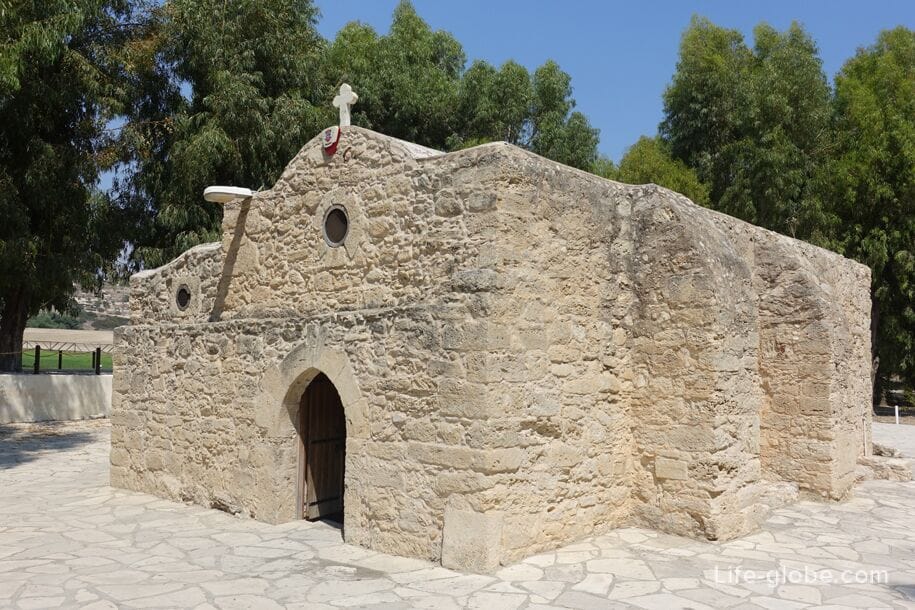
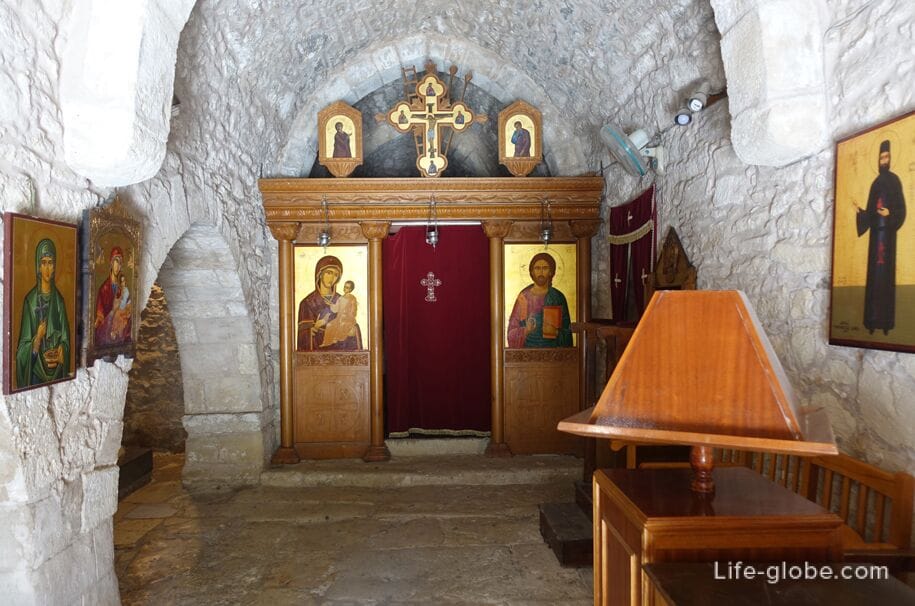
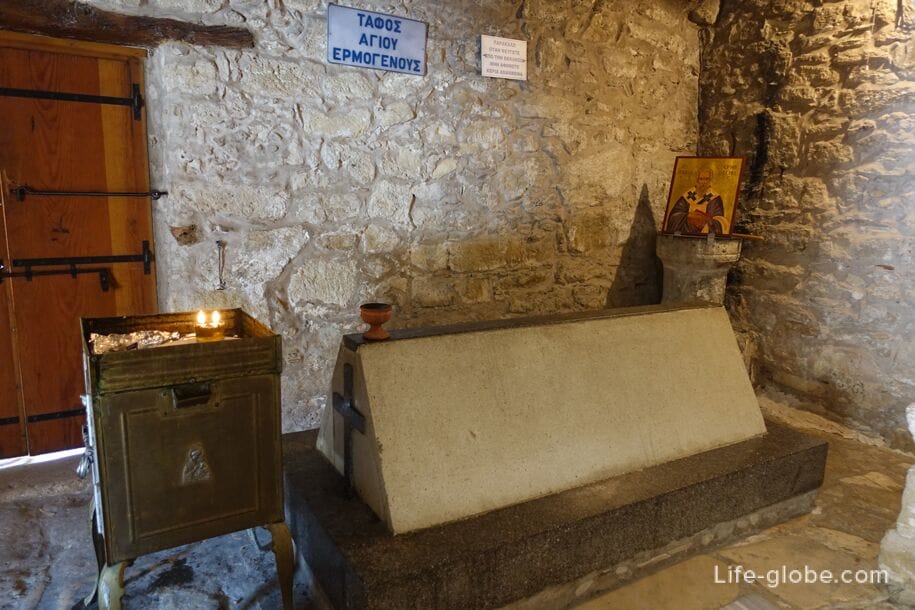
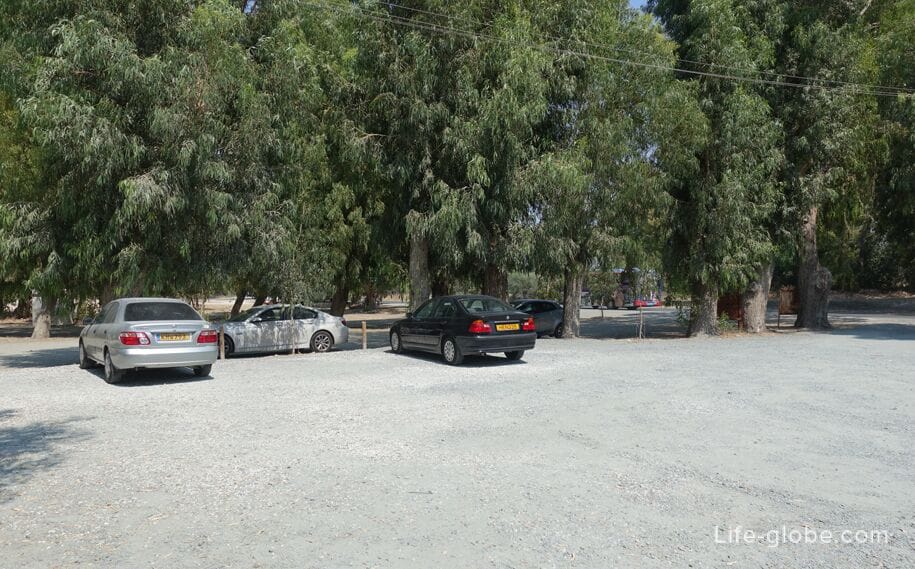
The Kourion Beach
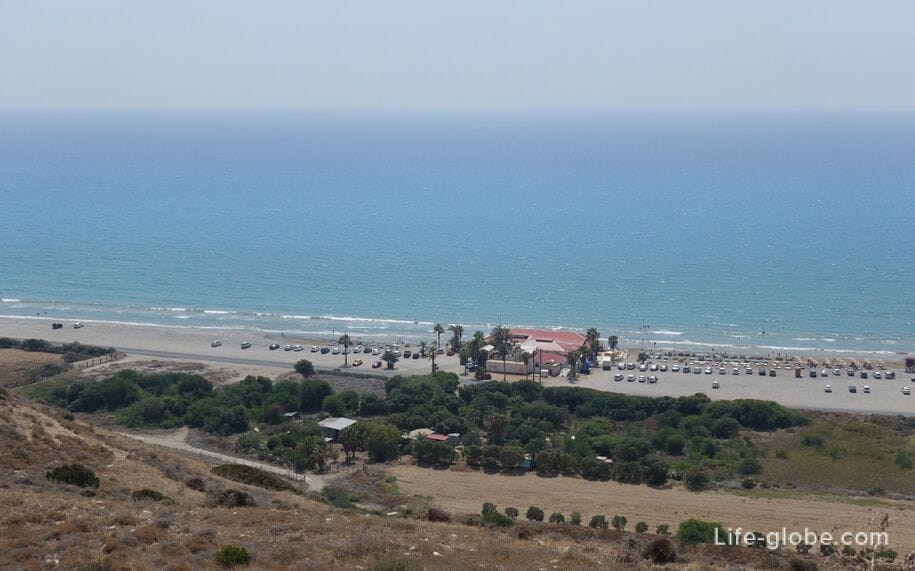
Archaeological site - ruins of the temple of Apollo of Galata/Hillsboro.
The village of Erimiwhere the Cyprus wine Museum and St. Raphael Church (Άγιος Ραφαήλ). Located between Episkopi erimi (a Curio) and Kolossi.
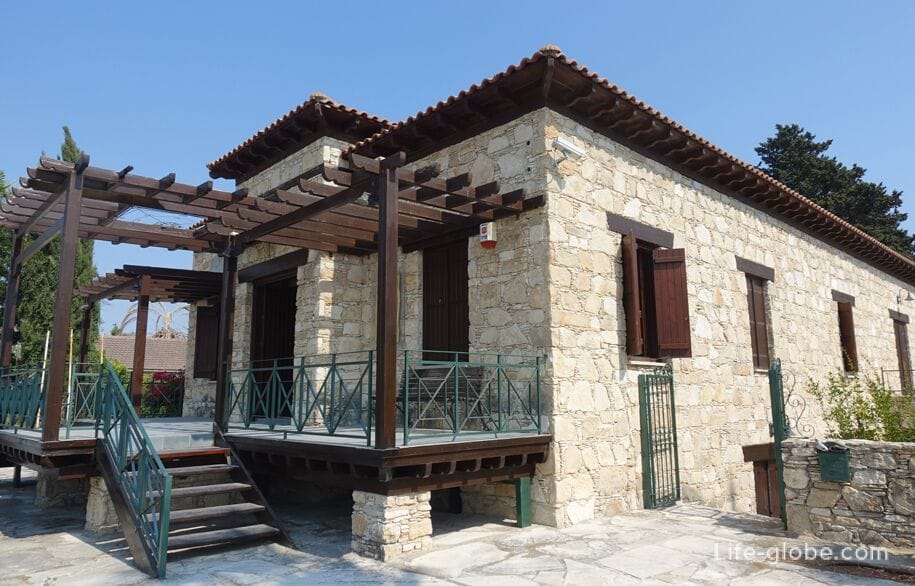
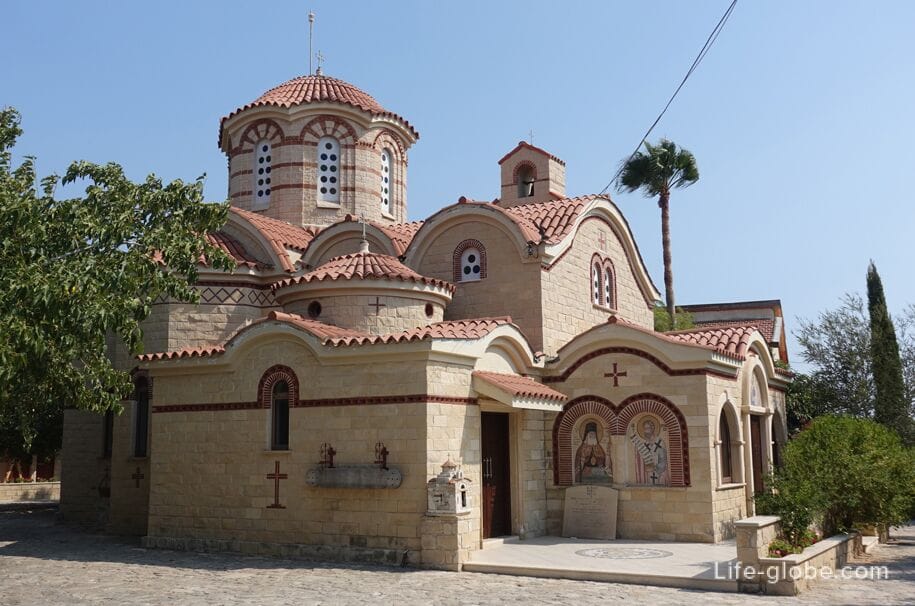
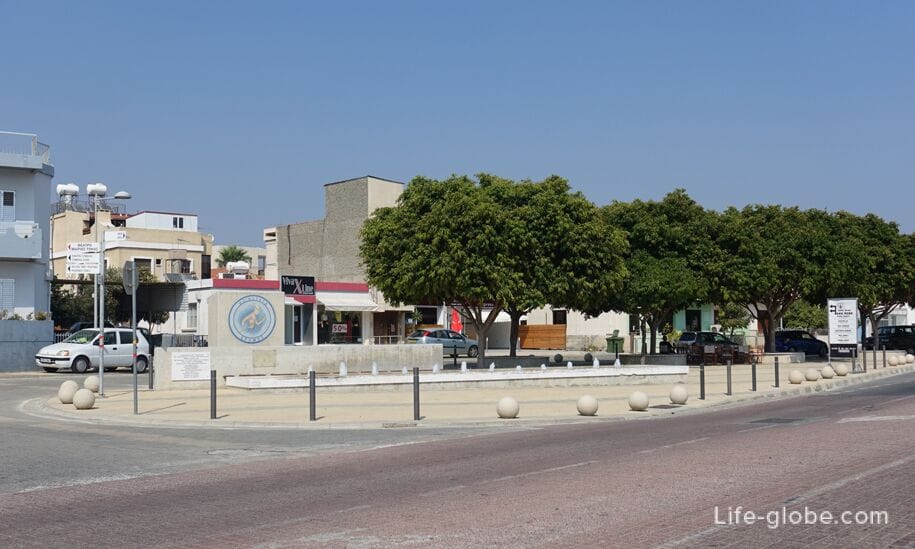
The Village Of Kolossi:
- Tamara Saint, Saint Andronikou, Apostolos Lucas (Απόστολος Λουκάς), St Antonius (Saint Antonios) and the city hall, located near the castle of Kolossi;
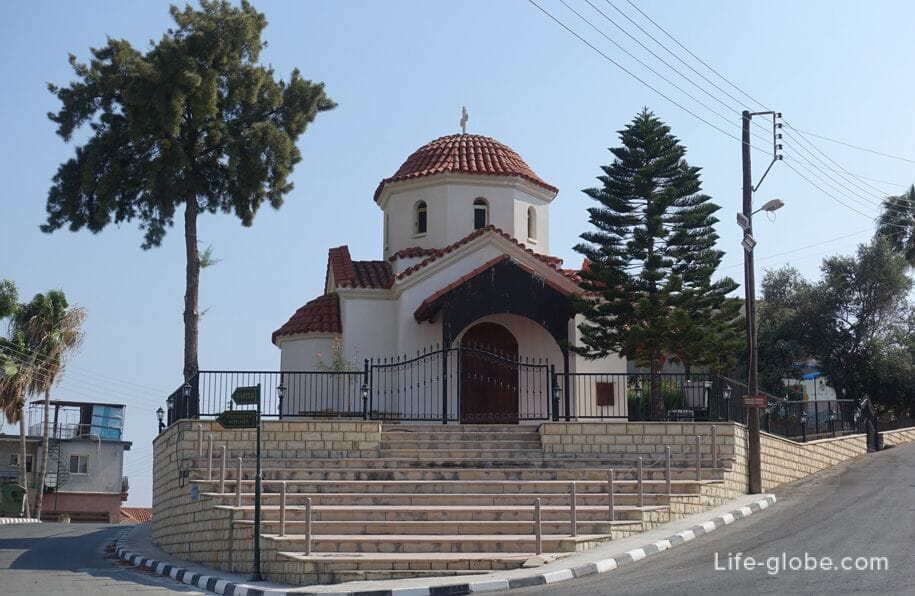
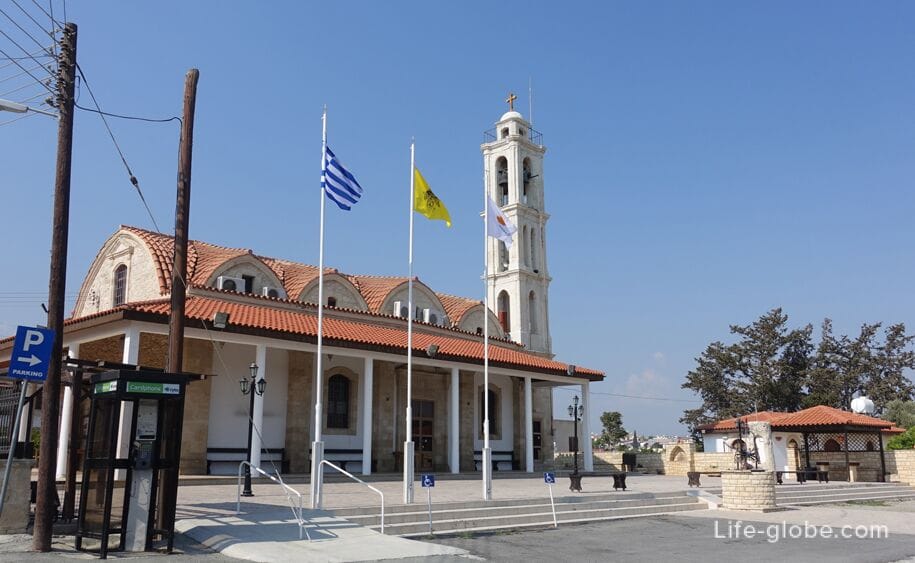
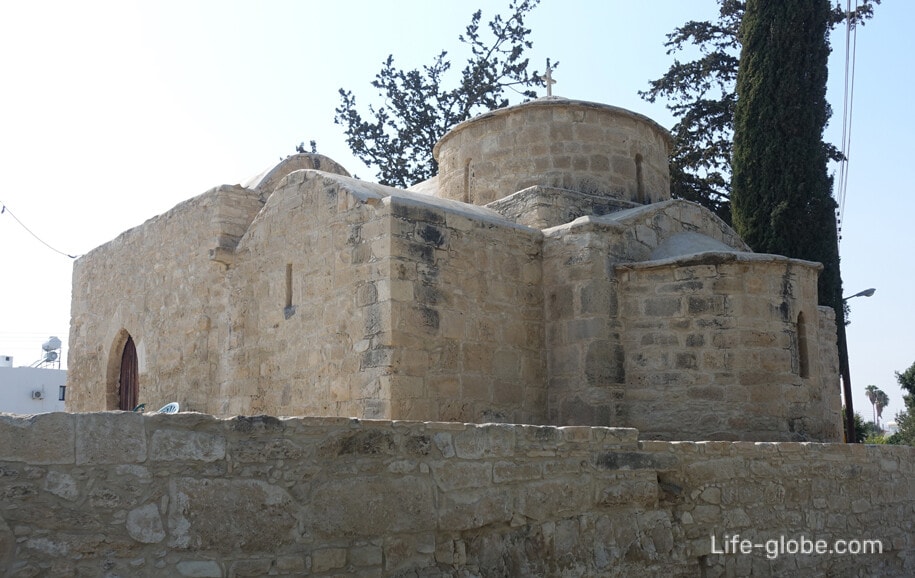
- the pride of the village of the same name, Kolossi castle, with the nearby remains of the aqueduct.
